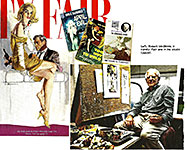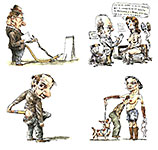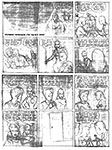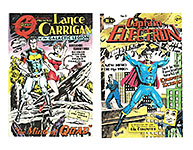 |
||||||||||||||||||||||||||||||||||||||||||||||||||||||||
Opus 366 (May 26, 217). The big hare raising
event this time is the celebration of our 18 years online. Yup: as of the end
of May, we’ve been posting Rancid Raves regularly, once a month
plus a monthly Harv’s Hindsight, for EIGHTEEN (count ‘em, 18)
YEARS!
NOUS R US Barometer of a Free Press; Ann Telnaes Cartoonists Are First Victims in Press Crackdowns Plastino Peanuts Stan Lee’s POW! Goes to Hong Kong Are Newspaper Comic Strips Doomed? Of Course Intro from New Cartoon Editor at New Yorker More Trump Cover Appearances Black Panther and Crew Dies The Death of Pepe by Bullying Presidential Pictures by GeeDubya
EIGHTEEN AND EIGHTY Our Celebration at Finishing our 18th Year Online —with, Among Other Remembrances, a Nostalgic Gallery of Memorable Illos
FUNNYBOOK FAN FARE Reviews of—: Nick Fury, First Issue Black Panther, Nos.1-11
MARGARET ATWOOD’S COMICS
Editoonists Talk Editooning in the Age of The Trumpet Signe Wilkinson, Bruce MacKinnon and Michael de Adder
EDITOONERY A Selection of the Month’s Editoons —and a Screed about the Dangers of a Delusional Prez
NEWSPAPER COMICS PAGE VIGIL The Strange and Wonderful on the Funnies Page
RANCID RAVES GALLERY Harv’s Antique Rape Cartoon (Very Bad) Robert McGinnis in Vanity Fair
BOOK MARQUEE Review and Preview of—: Not Waving but Drawing: Dark Thoughts, Lightly Rendered —by John Cuneo Dearth of a Saleswoman: Between Friends Collection —by Sandra Bell-Lundy
COLLECTORS’ CORNICHE Terry’s WWII VD Warning Strip
PASSIN’ THROUGH Appreciative Farewells to—: Jay Disbrow, 1926-2017 Carolyn Kelly, died 2017
QUOTE OF THE MONTH If Not of A Lifetime “Goddamn it, you’ve got to be kind.”—Kurt Vonnegut
Our Motto: It takes all kinds. Live and let live. Wear glasses if you need ’em. But it’s hard to live by this axiom in the Age of Tea Baggers, so we’ve added another motto:. Seven days without comics makes one weak. (You can’t have too many mottos.)
And our customary reminder: don’t forget to activate the “Bathroom Button” by clicking on the “print friendly version” so you can print off a copy of just this installment for reading later, at your leisure while enthroned. Without further adieu, then, here we go—:
NOUS R US Some of All the News That Gives Us Fits
THE BAROMETER OF A FREE PRESS By Ann Telnaes Telnaes is a Pulitzer-winning editorial cartoonist whose work, both static and in animation, appears at the website of the Washington Post. She is currently President of the Association of American Editorial Cartoonists. What follows is a version of a speech she delivered as the keynote address at the Canadian Committee for World Press Freedom luncheon in Ottawa on May 2. It was 1903 and Pennsylvania Governor Samuel Pennypacker had had enough. After a year of being depicted as a parrot by the cartoonist Charles Nelan of the North American newspaper, the governor wanted the satirical drawings stopped. The reason for Pennypacker’s frustration was that the cartoonist was using this visual metaphor to portray him as a mouthpiece for special interests. The governor did not take kindly to that and had an anti-cartoon bill introduced into the state legislature in order to silence his detractor. The bill proposed a ban on “any cartoon or caricature or picture portraying, describing or representing any person, either by distortion, innuendo or otherwise, in the form or likeness of beast, bird, fish, insect, or other unhuman animal, thereby tending to expose such person to public hatred, contempt or ridicule.” Pennypacker’s attempt to silence his critic backfired, though, when another cartoonist proceeded to draw the governor as a tree, a beer mug and a turnip. A more contemporary example happened just a few months ago. Newly elected President Trump invited a group of cable news anchors and executives to Trump Tower, ostensibly to open up a dialogue between the administration and the media, whose relationship at this point had become contentious. Instead, it was reported that Trump spent most of the time complaining about how he was being treated in the press and even brought up how displeased he was with one news organization who kept using a photograph which prominently showed his double chins. My
colleague Signe Wilkinson of the Philadelphia Daily News [another
Pulitzer winner, RCH] wasted no time sketching and tweeting a drawing showing
Trump with about 10 chins. All cartoonists have used mammals, birds, fish, reptiles, inanimate objects, you name it, because visual metaphors are part of our language. It is the editorial cartoonist’s job — through satire and ridicule, humor and pointed caricatures — to criticize leaders and governments who are behaving badly. It is our purpose to hold politicians and powerful institutions accountable to the people they are supposed to serve. Cartoonists have been targeted throughout history by humorless politicians and heads of state. From Honoré Daumier being imprisoned for drawing the French king as Gargantua (he also drew him as a pear) to Ali Ferzat’s hands being broken over his critical cartoons of Syrian President Bashar al-Assad, cartoonists are jailed and physically attacked because, through their satire, they threaten those who are abusing their power. Even in countries with traditions of free expression, as we’ve experienced in Denmark and France, cartoonists have been threatened and killed by Islamic fundamentalists who decide that violence is a justified response to perceived offenses to their religious beliefs. Why do cartoons cause such a visceral response? Because cartoons are universal, every human being responds to these seemingly simple drawings. They transcend language and class. Everyone, from the highly educated to the illiterate, can relate and see themselves in cartoons. Editorial cartoons can be subtle, cutting and usually humorous, but they also can be visually disturbing depending on the subject matter. And if an editorial cartoon is good, it has a strong point of view that makes the reader think and challenges their preconceived notions. A recent example of cartoonists being targeted for their work is Atena Farghadani in Iran. She was first arrested in August 2014 for a critical cartoon depicting a group of Iranian lawmakers as various animals. This drawing was her response to an anti-contraception bill in the parliament that would have set Iranian women’s reproductive health back decades. During her imprisonment, Farghadani was beaten and interrogated for nine hours at a time and was also forced to undergo a so-called “virginity and pregnancy test” because she had been seen shaking hands with her lawyer. These tests are in reality sexual abuse — and are employed specifically against women to intimidate and silence them, as they were used in Egypt during the Arab Spring. After Farghadani was released, she posted a YouTube video documenting her treatment and was again arrested in January 2015. She was given a prison sentence of 12 years and nine months for insulting the supreme leader, the Iranian president and members of parliament, among other charges. After a worldwide effort by cartooning and human rights organizations she was finally released in May 2016. The cartoonist Zunar has been harassed and arrested several times during the last few years for his critical cartoons calling out the corruption of the Malaysian government. His offices have been raided, his artwork and books confiscated, and his exhibitions attacked by government supporters. Zunar has been banned from traveling outside of Malaysia and is currently fighting numerous sedition charges and facing a possible 43 years in prison. Five months ago, journalists from the Turkish newspaper Cumhuriyet, including its cartoonist Musa Kart, were detained as part of an overall crackdown on dissent by President Recep Tayyip Erdogan. Kart has been a vocal critic of government corruption and targeted Erdogan, first as prime minister and then as president, for many years in his cartoons. [See our last posting, Opus 365, for more details.—RCH] The Turkish president has a history of not tolerating criticism and ridicule, once arresting a 16-year-old who Erdogan said had insulted him after the boy blogged about government corruption. Another time, Erdogan requested that German Chancellor Angela Merkel prosecute a comedian who ridiculed him in a satirical televised sketch. Kart is still in jail today and charged with “helping an armed terrorist organization.” His trial date has been set for July 24. Another Iranian cartoonist is being held by the Australian government in a refugee detention camp at Manus Island, Papua New Guinea. He goes by the name “Eaten Fish” and has been held for three and a half years, suffering from mental illness and sexual abuse while detained in terrible conditions on the island facility. Even in this horrible situation, the young Iranian cartoonist is creating drawings illustrating the human rights abuses he and his fellow detainees are enduring. Cartoonists from around the world — especially Australian cartoonists — continue drawing cartoons criticizing the actions of their government and supporting Eaten Fish. I used to tell my colleagues from around the world that American cartoonists never had to worry about being imprisoned for our cartoons because we have the First Amendment as our protection. But I’m not so sure anymore. We haven’t experienced Trump’s Republican-controlled Congress introducing any bills that ban caricatures of him as a bird, fish or vegetable, but Trump has more than once complained about the press attacking him and how unfair his coverage has been. Trump is as thin-skinned as Erdogan when it comes to be being made fun of, as we’ve seen in his Twitter feed after “Saturday Night Live.” He has tweeted that the “FAKE NEWS media … is the enemy of the American people” — and of course his definition of “Fake News” means anyone criticizing him or not portraying him in a favorable light. That’s a significant choice of words and dangerous to the role of a free press in a democracy. White House chief of staff Reince Priebus said in a recent interview that libel laws are “something that we’ve looked at.” I find it very unsettling that a president of the United States doesn’t seem to understand the First Amendment and thinks the role of a free press is the same as his personal PR firm. February will be the 30th anniversary of the Supreme Court of the United States’ decision in the Hustler v. Falwell case. The case was about a parody advertisement in Hustler magazine that targeted Jerry Falwell, a politically active Christian Fundamentalist minister during the 1980s and ’90s. It was a pivotal case for American editorial cartoonists because it dealt with the First Amendment’s speech protection and whether it extends to satire when it includes offensive statements about public figures resulting in, as Falwell’s attorney described it, “emotional distress.” This case, although not specifically about cartoons, had ramifications for editorial cartoonists since we use satire and caricature in our political commentary. The court ruled unanimously that the First Amendment’s guarantee of free speech bars public figures from recovering damages against those who comment on their actions. As Chief Justice William H. Rehnquist wrote in the opinion of the court: “Were we to hold otherwise, there can be little doubt that political cartoonists and satirists would be subjected to damages awards without any showing that their work falsely defamed its subject.” He went on to write: “Despite their sometimes caustic nature, from the early cartoon portraying George Washington as an ass down to the present day, graphic depictions and satirical cartoons have played a prominent role in public and political debate.” I’ve always felt in the United States that an editorial cartoonist is the bastard child of journalism. This is because most editors see us only as comic relief, less than the serious, legitimate opinion writer. In reality, the only difference is that we use images and satire to express a point of view. And specifically because of the visual language we use, cartoonists will always be first in the line of fire when controversial subjects are being debated and free speech is threatened. Editorial cartoonists are a barometer for all our free speech rights; a silenced cartoonist is an indicator of an unhealthy environment for freedom of expression in any given society. If we want to protect free speech and the free press, we must vigorously protect the editorial cartoonist.
CARTOONISTS ARE FIRST VICTIMS IN CRACKDOWNS ON PRESS Ten countries including Russia, Turkey and India have been condemned for censoring, locking up or threatening cartoonists in a new report published May 5 by AFP (Agence France-Presse). The following is taken from Yahoo.com/news coverage of that report. The Cartooning for Peace group said cartoonists were increasingly becoming the victims of repressive crackdowns on free speech. The watchdog's first annual global report also documents attacks on freedom of expression in Kenya, Venezuela, Egypt, Malaysia, Jordan, Ecuador and Burkina Faso. Its founder, the French cartoonist Plantu— who set up the group a decade ago with former United Nations chief Kofi Annan—said cartoonists were the canary in the mineshaft, "often the first to be threatened" by authoritarian governments. Said Plantu: "For six years we have been trying to defend the Venezuelan cartoonist Rayma," who was first targeted by Hugo Chavez and has since fled to Florida after being threatened by his successor, President Nicolas Maduro. The report also highlights the case of Turkish cartoonist Musa Kart, who has been jailed since October with colleagues from the liberal daily Cumhuriyet (see Opus 3656), and the Malaysian cartoonist Zunar who has been subject to nearly a decade of persecution, travel bans and harassment for his work criticising official corruption. "Whether their cartoons concern politics, the economy, sports or religion, cartoonists are confronted with the same threats as journalists who cover sensitive subjects," the group said in a statement. Cartoonists are always on the front line, it said, the victims of "censorship, attacks, imprisonment, exile, disappearances and, in the worst cases, even murder." Last week the press freedom watchdog Reporters Without Borders warned that the media has never been as threatened as it is now, undermined by increased surveillance and the rise of authoritarian leaders across the globe.
A PLASTINO PEANUTS Brian Cronin at cbr.com brings forth a wholly unexpected batch of Peanuts strips not drawn by Charles Schulz. The story is that Schulz’s syndicate, United Feature, was negotiating a new contract with the cartoonist in about 1977, and to give themselves leverage, they recruited comic book artist Al Plastino to draw some Peanuts strips. The syndicate owned Peanuts, the usual practice in those days of yesteryear, and as a ploy to get Schulz to agree to the terms of the new contract, they wanted to be able to say, “Well, if you don’t sign, we’ll just get someone else to do the strip.” And they’d have the Plastino strips to demonstrate their willingness to abandon Schulz. It was a ruse, surely, Cronin says: no one at United Feature ever expected anyone else to draw the famous comic strip.
“Do note,” Cronin notes, “that obviously an editor would have corrected Plastino’s typos had the strips ever actually been distributed for publication. Plastino was an amazing, amazing comic book artist,” Cronin finishes, “but while he could certainly ape Schulz drawings well— boy, no one could quite compare to Schulz’s story/art combo.”
STAN LEE’S POW! GOES TO HONG KONG Stan Lee's POW! Entertainment has been acquired by the Hong Kong-based Camsing International Holding, reports Anita Busch at Deadline.com. POW! Entertainment was founded in 2001 by Lee, along with Gill Champion and Arthur Lieberman, as an outlet for Lee's new creations in comic books, television, film, and other media. With Camsing's acquistion, Lee will relinquish the role of POW!'s Chairman but remain as the company's Chief Creative Officer. Shane Duffy, Camsing's United States Vice President, will become POW's CEO, with Champion continuing as President. “I believe the merger will bring significant synergy by combing POW!’s existing intellectual property library and Camsing’s strong IP merchandising network in China, therefore creating value for our shareholders," said Camsing’s CEO Vivian Lo. "At the same time, this deal will enhance Camsing’s comic intellectual property creation capability by working with Lee, who is a global proven name. The group will continue to produce better products and content for its global customers and develop another ‘Marvel’ in the Asian market.” Lee would reportedly continue to develop and produce unspecified POW! projects.
ARE NEWSPAPER COMIC STRIPS DOOMED? Of Course If the print newspaper business goes bust, print newspaper comic strips will disappear, too. Plain logic. The death throes will doubtless take a while, but the signs are surfacing. The Davis Enterprise in California (home of University of California at Davis) just gave up its Sunday funnies, which have been a feature of the paper since it expanded to Sunday morning delivery in the fall of 1987. The explanation: the paper can not afford to pay syndicate fees and pay the printer to publish in color. Said Debbie Davis, editor/assistant publisher: “Newspapers across the country are making very hard decisions about how best to spend their dwindling budgets, and at The Enterprise, we have chosen to eliminate comics rather than cut further into our staff.” They’re keeping daily black-and-white strips, but they’ve cut back the number. And puzzles have been reduced to two “We hope our readers understand that these were not easy decisions,” Davis said. “But these cuts allow us to focus on our core mission of providing timely and informative news, features, sports, entertainment coverage and opinion.” The Enterprise is a small paper, and small town papers are generally healthier than their big city cousins. But most small town papers don’t publish syndicated comics. On the heels of The Enterprise announcement, comes this—:
Cartoonist Says Comic Strips Still Relevant Cartoonist Sandra Bell-Lundy thinks comic strips are very relevant now, reports Dave Johnson at the Tribune in Welland, Canada, Bell Lundy’s home town. “If anything, I think comics are in their own little golden age … in a resurgence,” she said. “I think a lot of it has to do with graphic novels … eight- to 12-year-olds who are using them and comics because they find them enjoyable, and use them to read.” Bell-Lundy produced no statistics to support her assertion, which becomes, ipso facto, a simple matter of opinion—in this case, the opinion of a successfully syndicated comic strip cartoonist. She’s right, I think, about graphic novels helping to revive interest in comics generally. She’s just published a fresh collection of her Between Friends strip, entitled Death of a Saleswoman. The strips are culled from those published in 2011-12. For a few more words on the subject, scroll down to Book Marquee.
AN INTRODUCTION FROM THE NEW YORKER’S NEW CARTOON EDITOR(S) By Emma Allen at The New Yorker Website If I were you, right about now, I’d be asking, “Who the hell is this Emma Allen person?” Which, hello, rude—but if I’m being honest with you, it’s a question I myself have grappled with, essentially since Day One (March 11, 1988). There are some hard stats I can provide: I was born and reared in New York City; studied studio art and English (with minors in creepy collage and awful theories on the gaps between stanzas of Renaissance poems); and have cried but never thrown up on the subway. And now, I've been told, I'm the Cartoon Editor of The New Yorker. When I was a kid, I’d cut every single cartoon out of each week’s issue of The New Yorker and file them away in a lime-green folder, although no one can remember if I offered a reason why. My parents were just glad I wasn’t pursuing other early interests…such as investigating the feasibility of eating my pet goldfish. (R.I.P. Spacey.) Despite, or perhaps because of, such early sociopathic tendencies, I went on to write art journalism and criticism, before being admitted to the staff of The New Yorker, in 2012. Here, I’ve worked on editing Talk of the Town and Shouts & Murmurs and writing stories on such topics as the terrors of improv comedy and the joys of eating ramen in an isolation chamber. For the past three-plus years, I’ve run Daily Shouts, our humor site, roping in diverse new voices of the funny variety. I’ll continue to be in charge of that corner of the Internet, and hope to add a robust crew of cartoonists and other comic artists and illustrators to the mix.
I’ll leave you with this important historical document, drawn by the illustrator Caldwell Tanner back when I started at the magazine.It’s a pretty accurate likeness, so now you can identify me on the subway and give up your seat in exchange for preferential caption-contest treatment. As of today, I am honored to have a few more infamous baskets ("YES," "NO," "MAYBE") to get the hang of ....
MORE TRUMP COVER APPEARANCES The Trumpet is a job creator for the press in at least one regard, said Michael Cavna at Comic Riffs: “When he does something historic, The New Yorker must find somebody who’s up to the art of the deal.” And for Francoise Mouly, the magazine’s art director, the “somebody” is, more often than not, Barry Blitt. “Whenever a new Trump debacle starts to unfold on the political scene, I worry about whether artists can find the right response,” Mouly told Cavna about her call for covers. “It’s not easy to be up to the task, and many of the sketches that came in had the unraveling of the country, the Constitution, our institutions.” But then along comes the visual blurt by Blitt, the illustrator whose scores of New Yorker covers include such iconic works as “Deluged” (a post-Katrina Oval Office), “Silly Walk Off a Cliff” (his Monty Python-ized Brexit) and “The Politics of Fear” (featuring the “radicalized” Obamas). “With an easy glide of his pen, Blitt outlined the heart of the issue, giving voice to the outrage we feel on both sides of the aisle,” Mouly said of the cover titled “Ejected,” whose visual metaphor invokes the recent United passenger debacle. “It’s a perfect example,” Mouly said, “of how deep artists can go by embracing nonsense and illogic — a response on par with Trump’s actions.” Of the May 22 cover, Blitt wryly told Mouly: “It’s probably a bit of a leap. James Comey is 6-feet-8 — he probably would have been happy to give up his seat in a cramped cabin.” But
the Trumpet’s antics deserve a more in-depth study than they get in a single
drawing on the cover of The New Yorker. And so Mad comes along
with an entire issue devoted to “an all-out comedy assault on the most idiotic
idiot to ever reach the White House.” Coming from the Usual Gang of Idiots,
that’s satiric irony of wondrous portent. The blurb in the current issue of the Previews catalogue waxes on: “In these 128 pages [out in July 5], Prez Trump is mercilessly mocked, relentlessly ridiculed and savagely satirized. The book features Mad’s sharpest satiric shots at ‘the Donald’ [no one ever calls him that anymore; here, we call him simply ‘the Trumpet,’ as you may have noticed—as befits a blowhard of his epic proportions], comically chronicling his rise from obnoxious businessman to really obnoxious reality show host to uber obnoxious ‘Commander in Tweet.’ Please note: Mad will not offer refunds on this book when Trump is impeached.”
BLACK PANTHER AND CREW DIES The most heralded writing debut in comics could not pave the way for Black Panther success in every imaginable outlet. Estimated sales for the first issue of Black Panther and the Crew were 35,604, a far cry from the flagship title, Black Panther, which sold over 300,000 copies of its first issue last year according to George Gene Gustines at nytimes.com. The spin-off title, which just began, will be cancelled with No.6. Notice of the cancellation came from the highly touted author Ta-Nehisi Coates, who has been writing the adventures of Black Panther since his latest series premiered in April 2016. The decision was unusually swift, said Gustines, especially for a comic book with such an acclaimed writer, but Coates said the culprit was poor sales. Another spinoff series, World of Wakanda, debuted in December with just over 57,000 copies sold but was down to 14,547 by its sixth and final issue. Black Panther No.13, which came out last month, seems also to be lagging: it sold just 30,509 copies to retailers. “We launch things hoping they’ll connect with an audience,” said Axel Alonso, Marvel’s editor in chief. “In certain cases, it works — like Moon Girl and Devil Dinosaur, Ms. Marvel, and Ta-Nehisi’s Black Panther, which is still going strong.” In other cases, some comics cannot carve enough of an audience. But I question Alonso’s assessment that the flagship title is “going strong.” Not at just over 30,000 copies when the spin-off Crew is cancelled with numbers in that vicinity. No, I think Black Panther is foundering, and, as I assert in Funnybook Fan Fare down the scroll, it’s Coates’ doing. Or, rather, undoing. Marvel’s editorial management insists that even The Crew’s demise may not be permanent. Though single-issue sales were lackluster, Gustines said, some comics fare better as hardcover collected editions or softcover trade paperbacks. The top 300 graphic novels for April included two volumes of Black Panther collections, an indicator of continued interest in the series. “If the trade does really well, or if we get some heat behind it, there’s nothing saying that we don’t revisit The Crew,” Alonso said. Besides, there’s a Black Panther movie on the horizon. Marvel needs to keep the character in comics shops in order to nurture an audience for the movie. So what Alonso is saying here—so hopeful for Black Panther and the Crew—may very well be hedging a bet on the motion picture. Nor does the cancellation of The Crew signal a retreat from comics with nonwhite leads, said Alonso. He pointed to the recent premiere of comics starring Nick Fury Jr., who is the black son of the legendary espionage agent, and Luke Cage No.1, as two examples of Marvel’s commitment to diversity. More about the new Fury at Funnybook Fan Fare.
THE DEATH OF PEPE BY BULLYING And What It Tells Us About the Internet That We Always Suspected Reports of the
death of Pepe the Frog have been multitudinous and none of them have been
exaggerations. At NPR, Sam Sanders reported: With barely an Internet whimper,
Pepe the Frog, the gentle anthropomorphic cartoon character that had turned
into a symbol of hate, was put down by his creator, Matt Furie, over the
weekend of May 6-7, in a single-page comic strip. The final images were of Pepe
dead in a casket, with three former roommates paying tribute by pouring some
liquor on Pepe's face and drinking the rest. It was a death a purpose: msn.com characterized the creator’s murder of his character as “a rebuke to far-right extremists who transformed a benevolent internet meme into a racist, anti-Semitic symbol.” It was an ironic finale, Sanders observed—: When Furie created the character in 2005 and later featured him in the comic Boy's Club, he was just trying to make a chill bro who happened to be an animal. "He's a 20-something post-college roommate," Furie told NPR. "He's an anthropomorphic frog that lives with a party wolf, a bear-like creature, and then kind of a muppety, dog-like creature ... in a one-room apartment. And [they] kinda just party together and pull pranks on one another and hug each other and that kind of thing." Eric Reynolds at Fantagraphics, Pepe’s publisher, said Pepe was just “a laconic stoner frog who just wanted to hang out and enjoy his friends and snack.” Furie said the characters were loosely based on his life, "living with a bunch of guys," and that "Pepe the Frog's more of just the Everyman. He likes to take naps and smoke weed, play video games." Pepe really took off with one particular comic strip, depicting the frog pulling his pants down all the way to his ankles to urinate. After one of his roommates called him out, Pepe replied, "Feels good man." A star was born. And a lovely slogan lofted. Suddenly, Pepe was an Internet meme the popularity of which spread across Myspace, Gala Online and 4chan in 2008, becoming one of the most popular memes used in Tumblr in 2015. Pepe enthusiasts posted made-over images of the green-faced, bug-eyed frog. He appeared in many guises—as a female with long black tresses, as a student learning to read from a blank-paged book, as a villainous moustache-stroking frog, as a pipe. He was shown weeping, rolling his eyes, etc., etc., etc.
One meme depicted Pepe as Jesus rising from the dead. All in good fun, teenagers made Batman Pepe, Supermarket Checkout Girl Pepe, Borat Pepe, Keith Haring Pepe and carved Pepe pumpkins. Then trolls invaded 4chan and began a deliberate program to “reclaim Pepe from normies,” as one of them told Daily Beast reporter Olivia Nuzzi. “Normies” are regular people—“agreeable, mainstream members of society who have no knowingly abhorrent political views or unsavory hobbies. They are Katy Perry,” Nuzzi continued, “and when they latch onto a meme, the meme dies the way your favorite band dies when it sells out and licenses a song to Chevrolet. When mainstream culture gets in on the joke, in other words, the joke is ruined forever.” The trolls were on a rescue mission. And one way to restore the character was to sabotage Pepe’s benevolent persona by having him join unpopular groups or say unacceptable things— tongue in cheek, we assume (at least, at first). A dedicated cabal of 4chan users began to tie Pepe to white nationalism beginning around 2015. "We basically mixed Pepe in with Nazi propaganda, etc. We built that association," one user told Nuzzi. In transforming Pepe, they affected white supremacy and other unsavory poses. Pepe was sometimes depicted with a mustache like the one worn by Adolf Hitler, and in a white hood like those worn by members of the Ku Klux Klan. With a star of David on the back of his head and a big nose, Pepe watches the Twin Towers burn and collapse, smiling all the while. And during the 2016 election, the prankster fringe ended up successfully tying Pepe to Donald Trump, Sanders said—: "Eventually, a popular meme of the smug frog with Donald Trump's hair started circulating online and then eventually got retweeted by the Donald Trump campaign," said Matthew Schimkowitz, an editor at Know Your Meme. "When that happened, the meaning of Pepe as kind of a white nationalist or alt-right symbol kind of exploded. It was considered by many to be a tactic of dog-whistling from the Trump campaign to that sect of white nationalists online, and it became a new symbol for white nationalists maybe not online. It essentially amplified that specific meaning of Pepe." Another
image of Pepe shows him on one side of a fence and a Mexican couple on the
other. Trump-haired Pepe holds a Trump button next to his chin. Then Pepe
stands at a Presidentially Sealed lectern, Trump hair on his head, red tie
around his neck. “But what happened next was telling,” Sanders says. As Wikipedia reported: in September 2016, an article published on Hillary Clinton's campaign website described Pepe as "a symbol associated with white supremacy" and denounced Donald Trump's campaign for its supposed promotion of the meme. Said Sanders: “That only strengthened Pepe's connection to white nationalists, proving that a lot of times online, denouncing something can function as an amplifier.” Schimkowitz added: "Because such high-profile people — perhaps the two most famous people on the planet — were saying in effect that Pepe is a symbol of the alt-right, that became the kind of meaning for the meme entirely. It's what we call here the Pepe effect. When everyone starts using a meme to mean one specific thing, that essentially becomes the meaning of it. ... Things without very specific meaning can be changed pretty much in an instant," Schimkowitz went on. "If a word isn't clearly defined, it can then kind of morph. Memes kind of work the same way." “Memes are as good as they are versatile and remixable,” said Abby Ohlheiser at the Washington Post, “ — and since Pepe is so permutable, Pepe can be adapted to various causes.” Almost before anyone realized what was happening, Pepe was becoming intimately associated with alt-right attitudes, including white supremacy and racial bigotry. The tongue-in-cheek make-over turned toxic. Unwittingly, Furie’s Pepe became a symbol for hate groups. “The moral arc of the Internet is long, but it usually bends towards the awful,” Sanders finished. The same month as the Clinton denunciatio, saith St. Wikipedia, the two sources for Nuzzi's Daily Beast article revealed to The Daily Caller that they had coordinated beforehand to mislead Nuzzi (particularly about the existence of a organized campaign to reclaim Pepe) under the expectation that she would uncritically repeat what she was told, with one saying, "Basically, I interspersed various nuggets of truth and exaggerated a lot of things, and sometimes outright lied — in the interest of making a journalist believe that online Trump supporters are largely a group of meme-jihadis who use a cartoon frog to push Nazi propaganda. Because this was funny to me." The Anti-Defamation League, organized to oppose antisemitism, included Pepe in its hate symbol database in 2016 but noted that most instances of Pepe were not used in a hate-related context. Cartoonist Furie was understandably aghast. “It’s completely insane that Pepe has been labeled a symbol of hate, and that racists and anti-Semites are using a once peaceful frog-dude from my comic book as an icon of hate,” he said. “It’s a nightmare, and the only thing I can do is see this as an opportunity to speak out against hate.” Said he in a 2015 interview: "My Pepe philosophy is simple: 'Feels good man.' It is based on the meaning of the word Pepe: 'To go Pepe.' I find complete joy in physically, emotionally, and spiritually serving Pepe and his friends through comics. Each comic is sacred, and the compassion of my readers transcends any differences, the pain, and fear of 'feeling good.'" At first, he thought the alt-right Pepe movement would run its course and die out. But it persisted. Then, said Ohlheiser at the Washington Post, Furie decided Pepe needed some help. “I understand that it’s out of my control, but in the end, Pepe is whatever you say he is, and I, the creator, say that Pepe is love,” Furie wrote in Time magazine in October as part of his efforts to win Pepe back from the racists and anti-Semites of the Internet. And while the nature of memes almost dictated that his campaign was doomed to fail, said Ohlheiser, Furie did a lot of things right: he understood that Pepe, the meme, was not under his control. His solution was not, as some might try, to erase Pepe from the Internet. It was simply to make more memes, lots of them, and ones he’d actually like. When it didn’t work, Furie apparently gave up on trying to change Pepe, and decided to kill him instead. It may not work. Memes can be hard to kill. And even Furie is a party to Pepe’s longevity. In an interview with Carol Off on her interview show “As It Happens,” Furie stated that despite news of the Pepe's death, fans haven’t seen the last of him, adding: “The end is a chance for a new beginning,” and “I got some plans for Pepe that I can’t really discuss, but he’s going to rise from the ashes like a phoenix … in a puff of marijuana smoke.” What have we learned from this episode of minor league tragedy? We have learned what we already know in spades: the Internet is easily stampeded, often with ideas that are not well-conceived or, even, untrue. And the stampede effectively bullies often unwitting targets.
PRESIDENTIAL PICTURES George W. Bush,
our 43rd Prez, is not, for me, a fondly recalled occupant of the
White House. But he’s improving now that he’s out of it. After writing a couple
of books to occupy the time of his retirement days, GeeDubya has taken up
painting, inspired, he says, by Winston Churchill, who also filled his
retirement years in the 1930s by splashing oil on canvas. Near here, we’ve
posted a sampling of Gee’s work, which is extraordinary. Not for its visual
genius, which it lacks, but for the varied hues and
Fascinating Footnit. Much of the news retailed in the foregoing segment is culled from articles indexed at https://www.facebook.com/comicsresearchbibliography/, and eventually compiled into the Comics Research Bibliography, by Michael Rhode, which covers comic books, comic strips, animation, caricature, cartoons, bandes dessinees and related topics. It also provides links to numerous other sites that delve deeply into cartooning topics. For even more comics news, consult these four other sites: Mark Evanier’s povonline.com, Alan Gardner’s DailyCartoonist.com, Tom Spurgeon’s comicsreporter.com, and Michael Cavna at voices.washingtonpost.com./comic-riffs . For delving into the history of our beloved medium, you can’t go wrong by visiting Allan Holtz’s strippersguide.blogspot.com, where Allan regularly posts rare findings from his forays into the vast reaches of newspaper microfilm files hither and yon.
FURTHER ADO In the current issue of AARP The Magazine, Michael J. Fox talks about life with Parkinson’s—: For his part, Fox ascribes his sanity and emotional salvation to his wife, actress Tracy Polan. “Tracy wasn’t sentimental or romantic about it at all,” he says [about the time he was diagnosed with the disease]. ... “No terror. No big windy ... exhibition of grief and fear. Tracy was just like, ‘You’ve got a stone in your shoe. We’ll do what we can until you can get it out. In the meantime, if you limp with the stone, that’s all right. You can hold my hand, and we’ll get over that.’”
EIGHTEEN AND EIGHTY An Autobiographical Apostrophe to the Fantasies of Yesteryear AS FAR AS THE SOCIAL SECURITY people are concerned, I retired, officially, from gainful employment in 1997 or thereabouts. That’s when I started drawing Social Security checks. But I’d been in training for retirement for at least 40 years, beginning when I was a small boy, just graduating from college. I was leaving a 4-year career writing and drawing for and sometimes editing campus magazines. As rehearsed in Harv’s Hindsight for May 2017, I started my freshman year in the fall of 1955 by drawing cartoons for the fabled Flatiron, the humor magazine at the University of Colorado (Boulder), and got the magazine banned for my efforts. But that wasn’t the end of my magazine enthusiasm; it was, instead, just the start. A year after the demise of The Flatiron, I was managing editor of a “general interest” magazine that was the brain child of my friend Al Shepard and me. Al had been the business manager of The Flatiron, and, like me, he was sorry to see magazine journalism vanish from the CU campus. I don’t remember how we got together. While The Flatiron was still being published, I was on the editorial side; he, on the business side. In the normal course of things, we wouldn’t have anything to do with each other. But
somehow, we connected, found a common interest in reviving a campus magazine,
and concocted Pan. Al was enamored of 1920s era college humor magazines in which the mag’s mascot showed up and engaged the editor in long discussions masquerading as “editorials.” So Pan and Al held forth on Pan’s editorial page. As
managing editor, I felt some responsibility for attracting and nurturing
talent, cartoonists particularly. I didn’t want to hog all the cartooning slots
and make it appear that Pan was a closed shop for other cartoonists. So
rather than producing hordes of single-panel gag cartoons, I did comical
illustrations of text stories (or text-amplified humorous drawings) in the
manner those days of Playboy’s Jack Cole. Incidently, in the “Table Tourney” piece we just posted, you might notice the byline, “Finger-painted by. ...” This, as attentive readers will doubtless remember, is an allusion to the Denver Post’s criticism of the artwork in the issue of The Flatiron that was banned in the fall of 1955 (described in May’s Hindsight). Since most of the artwork in that issue was mine, I evidently smarted enough at the Post’s opinion of it to resurrect the appellation over a year later, reminding readers that the drawing at hand is what good finger-painted cartoons look like. Or some such backhanded wannabe vengefulness. “It may be finger-painted, kimo sabe, but it’s still getting published, so there.” We all have our infantile moments. Pan,
alas, lasted only two issues in the spring of 1957. Sales were so poor that we
had to give up after the second issue. Al graduated that spring, but the following fall, I fomented another magazine publishing scheme. If sales wouldn’t support a campus magazine, then subsidies might. I persuaded the campus newspaper, the Colorado Daily, to publish a monthly “magazine supplement,” which would be distributed free to the vast student body. I was editor, and my friend (and a fraternity brother of Al Shepard’s) Chris Glenn was managing editor. (As “Christopher Glenn,” he would go on to a long career with CBS radio in New York.) The
magazine was named Hue & Cry, and again, I showed notable restraint,
accepting the cartoons of other laborers in the vineyard ahead of my own (but
drumming up 2-page spreads of Jack Cole-like enterprises for myself). Hue & Cry lasted two issues. Dunno why it collapsed. The Colorado Daily certainly didn’t run out of money. But producing a slick-stock magazine for the campus multitudes was expensive, and the paper’s managers probably decided it wasn’t worth the cost. Looking over those endeavors sixty years later, I decided that Al’s Pan was better than my Hue & Cry. He was (and is) 4-5 years older than I, and his greater maturity and judgement showed in the various corners and cubicles of the magazine. Pan was more cleverly conceived than H&C: its satyr-like mascot evokes the Greek mythological god of the wild, shepherds and flocks and rustic music—a fun-loving creature, a perfect image for the sort of general interest magazine we had in mind. The name lent itself to such nuances as the little kid (juvenile goat) frolicking alongside Pan: together, the two appeared throughout the magazine in spot drawings that carried the fun-loving theme forward. And the editorial page was aptly christened Pandemonia, and by the second issue, I’d designed a tiny Pan playing his pipes that we ran as the end cut for every article—like the Playboy rabbit. Hue & Cry had no such fine-honed touches. And no mascot. I’d started using a ragged line in some of my cartoons in both magazines, a maneuver I picked up in admiration of a British cartoonist, Bill Hewison. When I freelanced gag cartoons to magazines years later, I again deployed Hewison’s line. And years after that when a friend gave me Hewison’s address in England, I mailed him samples of my work. He was shocked at the girlie cartoons. After
the collapse of Hue & Cry, I went on to other enterprises, joining
the staff of the summer Colorado Daily for two years, launching in the
second of those summers a humor and gossip column called Hare Today, and
eventually becoming editor the third summer, the summer after I’d graduated. But
I hadn’t forgotten the halcyon days of writing and drawing for a magazine. As I
contemplated graduating in the spring of 1959, I dreamed of someday become
editor of a humor magazine. I even formulated a prospectus for the magazine. I
applied for and became editor of the Colorado Daily that summer in order
to establish some sort of journalism credentials that might help me in securing
magazine work later. Somehow, that never worked out. Mostly, I forgot my ambition. I went in the Navy for three years, drawing cartoons all the way, and after that, taught English in high school for five years (no cartoons).
I enjoyed all eight years although, except for cartooning in the Navy, I was doing things I’d never planned on doing. Then when I secured a master’s degree, I rewarded myself with a trip to England sponsored by the National Council of Teachers of English, met and was befriended by an NCTE executive, who subsequently hired me as his assistant. After two years, his operation, a government-funded data storage and retrieval operation, folded, and I became the Council’s convention manager, a position I held for the next 27 years, happy all the time. All the while, I’d nearly forgotten about cartooning as a career choice. I was having too good a time doing other things. In 1978, I revived the idea and freelanced gag cartoons to magazines for four years in my spare time. My adventures in this area are rehearsed in a book of mine, Not Just Another Pretty Face: The Confessions and Confections of a Girlie Cartoonist, which, next fall, will be reissued by Lost Books. Until then, you can find me blathering shamelessly on in two Hindsight pieces: “It’s Not My Fault” (October 2012) and “How the Happy Harv Freelanced Cartoons” (February 2012). I had a decent sales record, but I wasn’t excited about cartooning on spec. I eventually retired from that enterprise. It wasn’t until sometime over the last few months as I contemplated finishing 18 years of Rancid Raves this month that I remembered the fond ambition of my youth to edit (publish?) and write and draw for a humor magazine. Rants & Raves is not a humorous enterprise exactly (although I like to think it has its moments, albeit some unwitting ones), but it is a magazine, an online magazine with regular editorial departments and a schedule of publication and a focus on cartoons. It is, in fact—or very well might be—the magazine I hoped to produced. And now I’m doing it—satisfying at last the ambition of my callow youth. As for retirement, it’s pretty clear that I have failed at it. I work on my magazine every day, 2-3 hours a day. Get up at 6:30 a.m., work on the magazine until breakfast at 8:15 a.m. Work on it some more, 9:30-11 a.m. Sometimes—as one of my self-imposed deadlines looms—in the afternoons, too. Couple of hours. So I didn’t retire after all. Instead, I’m doing what I’d hoped in my so-called formative years what I’d do in the ensuing ones. Fascinating, eh? AN 18-YEAR GALLERY And Eighty Explained Apart from the foregoing nostalgic meander down Memory Lane, this “anniversary issue” of Rants & Raves commemorates passing its 18-year milestone with a gallery of pictures culled from the Rancid Raves pictorial inventory of those years—memorable or rare illustrations that were sprinkled, willy nilly, through the proceedings of those years. Why bore you with this self-indulgent display on the dubious occasion of an 18th anniversary? Most such celebrations occur at decade markers—the 10th, the 20th, etc. But the 18th? Unprecedented. All the more reason then: we like to do unprecedented things here. But there’s another reason. I’ll be eighty in a month, and from that elevation—you never know—I might not last until the 20th anniversary. So it’s now or never, an axiom for living in the present. We’ll do a round-up now. Most of the pictures seem self-explanatory, but I’m annotating a few after posting them, herewith—:
AMONG THIS ARRAY is a reproduction of “Cartoon No.1" as it appeared in Punch magazine July 15, 1843. This is the first use of the word “cartoon” to describe the kind of humorous drawing we have in mind when using the word these days. Also on display is one of my attempts at doing Hank Ketcham’s Dennis the Menace, next to which is his penciled version of the same gag. He’d invited me to try-out on the feature, and I did— as explained in Harv’s Hindsight for October 2012, “It’s Not My Fault.” Eldon Dedini did a nifty painting of Mary Francis and her escort, her husband, comic strip cartoonist Gus Arriola. Gus and Eldon had a mutual admiration society in Carmel, California, where they both lived and created stunning cartoon art. I used to visit them on my way back from the Sandy Eggo Con every summer. I’ve included one of Gus’s Gordo Sundays, a vivid sample of the spectacular fiestas of design and color that were his Sunday strips, and a postcard he sent me, a fondly treasured memento of those post-Con visits and our work together in producing a book about him and his extraordinary strip, Accidental Ambassador Gordo. Somewhere along the line, you’ll come upon four exceptionally powerful editorial cartoons, all by the late Etta Hulme, whose work and person I greatly admired. The “naked cartoonists” post comes from an entire took of such hilarities. The book is the invention of the late Mark Cohen, friend of cartoonists, who persuaded many of them to submit a nude self-caricature. Fantagraphics subsequently collected them all and published a book, Naked Cartoonists. And there’s a photo of me and Milton Caniff’s Dragon Lady. And two of my own favorite cartoons, both done for a men’s magazine feature about “world records”; these depicted the world’s longest penis and the world’s longest pubic hair. Hilarious. I’ve also included a pencil rough of one of the earliest of my harem cartoons for Fling magazine. This rough was never finished and, therefore, never published. You can find the whole sordid history of this delinquency in Opus 350 from last April. And Kelly Freas’ self-caricature. He and I had adjoining tables in Artists Alley one year at the San Diego Comic Con. He left this little drawing at his table whenever he wasn’t present. I admired it and asked for it, and he generously left it to me. In those years, I peddled limited edition prints of my lewd lady pin-ups, and during a pause in the stampede of buyers, Kelly leaned over and told me that he got started in illustrating science fiction, subsequently his forte, because the covers of sf magazines were the only place he could sell pictures of scantily clad wimmin. At least twice Dagwood got his distinctive and wholly unrealistic cowlicks cut off, both historic occasions memorialized here. The Sage, Sand and Salt strip by Dick Sebald was a Sunday black-and-white strip that appeared only in the Denver Post in the late 1940s. It was a particular favorite of mine: I learned how to draw horses from it. Most of the weekly strips were drawn much simpler than the one included here, in which Sebald was probably showing off his pen skills. I worked as a convention manager for almost 30 years, and at the end of that adventure, I did a cartoon describing the experience—like riding on a fire truck, I said. And I’ve also included my drawings of Saint Jeff, the mascot of Jefferson High School in Edgewater, Colorado. I invented the appearance of Saint Jeff, who appears most often as he does here on the left; and never, except here, as he appears on the right, which I did a couple years ago, just havin’ some fun. Saint Jeff, being a school mascot, may be my claim to immortality—assuming the high school lasts a few generations. It’s already almost 60 years along. And that’ll do. Enough for eighteen and eighty. But not without quoting memorist Abigail Thomas, who, in AARP The Magazine, writes: "I’ve never felt quite this mortal. It’s a beautiful word, ‘mortal,’ rhyming with ‘portal,’ which sounds optimistic. And really, who wants to live forever? How tedious life would become. Mortality makes everything matter, keeps life interesting. And that’s all I ask."
CAT WIT “Always be sincere whether you mean it or not.”—Garfield
FUNNYBOOK FAN FARE Four-color Frolics An admirable first issue must, above all else, contain such matter as will compel a reader to buy the second issue. At the same time, while provoking curiosity through mysteriousness, a good first issue must avoid being so mysterious as to be cryptic or incomprehensible. And, thirdly, it should introduce the title’s principals, preferably in a way that makes us care about them. Fourth, a first issue should include a complete “episode”—that is, something should happen, a crisis of some kind, which is resolved by the end of the issue, without, at the same time, detracting from the cliffhanger aspect of the effort that will compel us to buy the next issue. A completed episode displays decisive action or attitude, telling us that the book’s creators can manage their medium.
IN NICK FURY No.1, we meet Nick Fury the second, son of the Nick Fury that animated SHIELD all those years ago. He, like his father, wears an eye patch (which might be some sort of computer device, or X-ray). Oh, and he’s African American. James Robinson’s story, a frail thread of a thing, has Fury attacking Auric Goldfellow’s headquarters for some undivulged reason. Robbery? Sabotage? Dunno. It’s not clear. Maybe Fury is there merely to get the combination to the safe. That, apparently, he does. And right away, he’s attacked by a trio of female Hydra agents, led by Frankie Noble. Just as she gets ready to kill Fury, Fury’s ride arrives, a space-convertible that looks like a classy muscle car with wheels on sideways. He gets away despite the considerable armament Frankie musters to prevent his escape. At the end of the adventure, she promises to meet Fury again. The entire issue is a completed episode. We understand Fury’s considerable technological weaponry, we admire Frankie’s shape and fanaticism, and their snotty dialogue. None of the action, however, is given any dimension: we don’t know, exactly, what Fury is doing at Goldfellow’s lair, or why he there, exactly. Without this sort of plot mechanism, all the action—most of which consists of dramatically difficult to comprehend snapshots—seems pointless. Aco/Hugo Petrus’s razzle-dazzle pictorial treatment is nearly impossible to decipher. And that, in a visual medium, is a pretty severe failing. After reading the two two-page spreads posted near here—and reading them more than once—I still don’t know (1) what the distractions are that Fury can choose from or (2) which of them he has chosen a couple pages later (the second of the two visual aids near here).
All these visual acrobatics are perhaps intended to invoke Jim Steranko’s spectacularly innovative storytelling techniques during his mid-1960s stint on “Nick Fury, Agent of SHIELD” in Strange Tales. If so, they fail badly. Steranko enhanced his stories with his pyrotechnics; Aco/Petrus have permitted the fireworks to overwhelm and obscure the story. What they have is something decidedly silly. If we can’t tell what Fury is doing or whether he succeeded at it (except by taking his word for it), we cannot understand the import of what he’s doing. And if we can’t understand that, there is no story. The story, in short, has fallen by the wayside. I can sympathize with this team’s desire to make the visuals in a visual medium do more than show us, simply—clearly—what’s going on. They want the visuals to also evoke an emotion inherent in the situation they’ve set up. An admirable ambition. But it fails miserably here. They’ve given us a smattering of pictorial material—splattered all over the pages (and there are more spreads in this book like the two you’ve just seen)—some of which we can’t even understand. The picture of the dog—okay, a German shepherd, security guard. But the lighted exit sign? The security camera? (How’s that a distraction?) Corners of playing cards? Comics aren’t just visual exercises. They’re visual contrivances for telling a story. And if all you have is the devices, you aren’t storytelling. And if you’re not storytelling, you’re not doing comics. Gift wrap, maybe. But not comics.
I SAT MYSELF DOWN the other day to read Black Panther, Nos.1-11, the wildly heralded comic book debut of famous author Ta-Nehisi Coates. On the surface, the story is simple: T’Challa, king of Wakanda, known the world over as Black Panther, finds his throne threatened by a couple hostile groups, one of which is led by a pair of lesbian warriors, Aneka and Ayo. An over-arching theme is a philosophical dispute between democracy and monarchy, with opponents of the latter vowing that no one man should wield so much power. T’Challa must deal with these rebels without himself being fully confident that one man should have so much power as king. He also spends much of the story searching for his sister, Shuri, who is in some sort of limbo between life and death, and hoping for his mother—their mother— to survive an assault. The tale is invested with epic biblical trappings, but, alas, it’s not comics. The pictures by Brian Stelfreeze (Nos.1-4 and 9) and Chris Sprouse are superb, often stunning. The storytelling—narrative breakdowns, panel compositions and page layouts—is excellent throughout. And the pictures are often enhanced with digital maneuvers that turn drawings into visions. But for all their pictorial skill, the artists cannot rescue a story that is wordy in the extreme. Coates’ characters never stop talking. And their talk is too often mere mumbo jumbo, a parade of African-sounding names and veiled allusions to heroic moments in the past. Or the present. Here are some samples, drawn from the endless monologues various characters indulge themselves with: “But the Adowans were never fooled. They knew what was out there lurking. In the eighth vicennial of Alkebulan’s elder age, shortly before King Sakura’s rising, strangers arrived in the court of Adowa demanding tribute. The strangers believed Adowa rich but weak. Why, they reasoned, should the fruits of the world be distributed in caprice? Why should Adowans be so happy? “To the strong and to the warriors should go the bounty of every valley, for the warriors give of the body. Glory to them, the truly deserving. And may the untravailing dirt-farmer, the hunter of small game, the forger of pots and trinkets, ever dine on thistles and thorns.” Alkebulan and Sakura don’t figure in the story at all (and are not, I believe, ever mentioned again; neither is Adowa). Flinging unfamiliar names around may give the tale a patina of history, but it’s confusing. Who are these people? Should we remember them? Sometimes the verbiage waxes quasi-philosophical: “You say you oppose kings, and yet your methods do not differ from theirs. You say you war against tyranny, but you too war against your own people. You say you bring the power of life. Then how did it happen that your very name became death? The question with no answer. This is what you wished us to consider. But there was an answer, and you knew it. “‘What is our remedy against the robber, who so broke into our house?’ We burn down the house—with the robber inside.” And—: “‘Enslaved’ is what the plunderer does to a righteous woman. But ‘a slave’ is a righteous woman who has accepted the plunderer’s law. And not even the righteous has the power to grant such acceptance. Freedom can no more be given away by mortals than the seas be crafted by mortal hands. For even as a woman plunges into bondage, still she hungers for, thirsts after, craves the light.” And then there’s poetry—: “Once when I was tree, African sun woke me up green at dawn. African wind combed the branches of my hair. African rain washed my limbs. Once when I was tree, flesh came and worshipped at my roots. Flesh came to preserve my voice. Flesh came honoring my limbs. Now flesh comes with metal teeth, with chopping sticks and fire launchers. And flesh cuts me down and enslaves my limbs to make forts, ships, pews for other gods.” All very grand sounding. And it goes on and on and on. Poetry but no plot. The story shifts back and forth between the present and a past fraught with historic significances of seeming import. And there are pages devoted to tangential stories, sidebars and character-development detours. All of these maneuvers rob the narrative of forward momentum. Languishing in these narrative backwaters, we lose any sense of what the basic conflict in the tale is. And Black Panther is too often absent. Some issues transpire without his being present at all. Or so it seems. For a title character, he has almost no visible role. Coates may be a good prose writer—and his ambition for this title is admirable and evident. But he’s not skilled at writing comics, at producing a story that blends words and pictures, each enhancing the meaning and the drama of the other. His tale is almost saved by the brilliance of its illustrators. Almost. But not quite.
We admire the visuals, but their import is overwhelmed by Coates’ ceaseless intoning of paragraph after paragraph of verbiage inflated with artificial import. It seems more fake than fateful. Oh—and the conclusion to the great verbal struggle that has animated the story for 11 issues? T’Challa leads his forces into battle, claiming “we are no man—we are a nation.” “We have long been told that Wakanda is a land of kings. But kings are but men. They die like men while the nation lives.” Then on the last page, we have a picture of a table around which are gathered “Queen” Shuri and her governing cohorts—all women. “One man” should not have so much power, but apparently one woman and her attendants will be just fine. The picture is entitled “A Beginning.”
QUOTES & MOTS More one-liners—: Bad breath is better than no breath at all. I was the kid next door’s imaginary friend. Next time you wave, use all your fingers. I may no be totally perfect, but parts of me are excellent
MARGARET ATWOOD’S COMICS In one specific way, Donald Trump has been good for Margaret Atwood, Michael Cavna speculated at the Washington Post’s Comic Riffs: “Since he became president, the political shift has sent The Handmaid’s Tale, her 1985 dystopian novel about an authoritarian American society, rocketing back up the bestseller charts.” And this month, the television adaptation of the book begins. But the Booker Prize-winning author says she’d rather talk about something that fills her with joy and the buoyancy of childhood optimism. “Atwood, you see, was raised as a voracious reader of comics — a form she still adores. And so with her graphic-novel series Angel Catbird —illustrated by Johnnie Christmas— she continues to fulfill a dream at age 77, more than three decades after her Handmaid’s Tale painted a world of women subjugated within a Constitution-suspending dictatorship.” From Atwood’s earliest years in the 1940s and ’50s, said Cavna, Atwood not only passionately read newspaper and magazine comics, from Batman to Blondie to Rip Kirby, she also drew them herself. “That’s what we did in Canada,” she says. “We were living in the woods.” Her older brother’s plotted-out drawings “were more about warfare,” she says, while her characters — including rabbit superheroes — “were playing around.” By age 6, young Margaret was drawing cartoons that featured flying cats often affixed to balloons — fun, furry symbols of buoyant hope rising above deprivation. “I drew so many balloons because we didn’t have any,” says Atwood, recalling the rubber shortage during the World War II. “It was a very magic idea — that you could go up in a balloon,” she continued, citing a film that was born the same year she was: 1939’s “The Wizard of Oz.” Decades later, when Atwood met with Toronto-based project adviser Hope Nicholson, she pitched her graphic-novel visions involving flying felines. And once she spoke with Dark Horse editor Daniel Chabon, she knew her cats would become a publishing reality rendered by more talented comics hands than hers. “I got lucky enough to get Johnnie [Christmas],” she says, as well as colorist Tamra Bonvillain. Atwood had created the political comic strip “Kanadian Kultchur Komix” in the 1970s, allowing her to reach what she calls the ceiling on her limited, “lumpy” artistic talent. Atwood’s new graphic-novel stories brim with joy. She nods to mid-century action-adventure comics tropes even as she tweaks them. In classic superhero fashion, Angel Catbird involves a scientist: mild-mannered genetic engineer Strig Feleedus, who becomes a mutant because of an experiment gone wrong. His avian/feline hybrid body lands him squarely in a dark world of other animal mutants, complete with a real minx of a love interest. Underpinning all of this, Cavna notes, is Atwood’s self-proclaimed passion for bird conservation and feline causes. “Her graphic novels are dotted with facts about nature, as well as links to sites for more information. “Still, like the true student of cartoons that she is, Atwood knows what she must deliver to her fellow fans of the art form: ‘This comic has to stand on its own — it can’t be too preachy.’”
EDITOONISTS TALK EDITOONING IN THE AGE OF THE TRUMPET It's no secret that the relationship between the news media and the TrumpTwit is difficult and adversarial, with the Trumpet blasting journalists as “the most dishonest human beings on Earth." But while journalists and reporters are taking a hit, the Prez of Bombast has proved to be a boon for other members of the media— political cartoonists. Three editoonists joined Day 6 host Brent Bambury on Canada’s cbc.ca/radio one day early in the year to discuss how they're navigating what some consider to be a creative heyday for their profession. Signe
Wilkinson, a Pulitzer
Prize-winning editorial cartoonist, is based in Philadelphia and works with the Philly Daily News; Bruce MacKinnon is an award-wining cartoonist
whose work appears in the the Chronicle Herald; and Michael de Adder is
also award-winning, with his work featured in the National Post, Maclean's and
the Chronicle Herald, among others. Whether the paper is national or local, editorial cartoons have been spotlighting Trump for months. "He has focused everyone's attention, on both sides, so other things kind of pale in comparison," says Wilkinson. Both Wilkinson and MacKinnon work for local papers, and MacKinnon acknowledges that it can be difficult to balance commenting on local issues versus lampooning Trump. “That is that challenge because Trump presents something almost every day, so sometimes I feel like I'm overdoing him," explains MacKinnon. When asked what he likes about illustrating Trump, MacKinnon says "just about everything. Whether it's the comb over or the orange face, he's a caricature that you don't even know where to start." All three cartoonists admit that there is no secret formula to getting started when drawing a political figure. "I have never disliked drawing people. I mean, you get what the voters give you," Wilkinson says. Although she does acknowledge some politicians, with understated features, are more difficult than others to draw: “People like the original George Bush, a very handsome white guy with pale hair, pale eyes, no facial hair— those are kind of a nightmare." After drawing the likes of Canadian politicans Peter MacKay, Mike Duffy and Justin Trudeau, de Adder says it can be difficult for cartoonists to illustrate younger figures. He prefers older characters because of the pronounced physical traits. "Politics ages people really really fast, so as you're getting better at drawing them, they're getting easier to draw," laughs de Adder. Wilkinson notes that the subject of cartoonists' drawings are often men – at least until Hillary Clinton's presidential campaign last year. In an industry dominated by male cartoonists, she recalls early cartoons of the then-first lady emphasizing things like Clinton's hair and pantsuits more than her persona. The real challenge is depicting the politician's aura and personality, de Adder says. It's a challenge he enjoys taking on with Trump. "I love the arrogance. I don't know how you draw it but you know when you've got it." The panelists agreed that being a cartoonist has its ups and downs, especially when it comes to losing readers who get offended by their illustrations. "I lost some people for [a] cartoon, saying I went too far. But, well, you know what? Sometimes you have to go too far," says de Adder. The cartoon to which he's referring compares Trump to the human posterior. MacKinnon says this is all part of being a cartoonist, adding that "if they're not responding, then you're not doing it right." Meanwhile, Wilkinson likens feedback from readers to a metaphorical bullhorn that "readers pick up and [use to] blast back." "We have a much different audience than we used to," Wilkinson says, adding that cartoonists are still based mainly in print, an industry struggling to survive. So while they may not be sure of what the future holds for the industry, all three cartoonists remain optimistic about the power of cartoons. "I actually think that a good political cartoon these days has a huge amount of power. You can reach everybody, literally, right now. At least people on social media," says de Adder. The popularity of these images is cause for optimism for Wilkinson, who sees reason for people to unite in today's political climate. "Everybody asks 'what can bring people together?' Our cartoons can!" she exclaims. The visual aid that started us off a few paragraphs ago offers a sample of each of the editoonist’s work. Wilkinson uses Trump’s preference for extra-long red ties to remind us that his manufacturing connection is with sweatshops in China. DeAdder gives us a Trump with vision and small hands and a perpetual petulant pout. MacKinnon shows what the Trumpet actually worships.
PERSIFLAGE & FURBELOWS In March, Margaret Atwood was in New York City for the annual National Book Critics Circle award ceremony where, after receiving a lifetime-achievement award, her acceptance remarks expressed both gratitude and subversion: “I will cherish this lifetime-achievement award from you, though, like all sublunar blessings, it is a mixed one. Why do I only get one lifetime? Where did this lifetime go?” In Rebecca Mead’s article in The New Yorker for April 17, Atwood responded to a question about optimism for the future being at seeming odds with some of the “darker scenarios” in her fiction: “It is a question of hope,” she said. “It is a question of faith rather than knowledge.” Humans, she went on, “have hope built in,” adding: “If our ancestors had not had that component, they would not have bothered getting up in the morning. You are always going to have hope that today there will be a giraffe, where yesterday there wasn’t one.”
EDITOONERY The Mock in Democracy So the Prez fired the FBI director in the course of being investigated by the FBI. On the face of it, that looks mighty suspicious. But it gets even worse. James Comey was investigating Trump and his campaign for possible treason. Treason! And then a couple days later, the Prez went live on tv to proclaim that he’d fired the guy because he was spending too much time pursuing what the Prez called a “hoax”—that is, the investigation into the Trumpet’s possible collusion with the Russians to sabotage the Clinton campaign. It looked, as even the most casual passerby could tell, like an attempt to shut down the Trump-Russia investigation by calling it a “made up story” that’s consuming too much time. As Bill Maher observed, it looks like obstruction of justice to me, and it looks like Trump admitted as much on live television, coast to coast. Editoonists,
naturally, jumped right in, rubbing their pens in fiendish glee. None of them
accused the Trumpet of treason, but, collectively, they attended to most of the
implications. Next around the clock, Marian Kamensky —who draws for satiric weekly magazines in Switzerland and Germany but lives in Vienna—has constructed an ingenious contraption, a vivid visual metaphor for the dilemma that Trump made for himself by firing Comey in the midst of the investigation Comey was conducting: as soon as Kamensky’s Comey walks off the plank, Trump will hang for banishing him. David Fitzsimmons gives us a kingly Trumpet—with crown and “regime”—whose bloody executioner’s axe vividly shows how the next FBI director is likely to view his job. And John Cole at the lower left offers an image that suggests how successful Trump’s maneuver will be in shutting down the investigation: the Russian meddling question is still going to be chewing the Prez’s ass, and it’s a big enough bear that everyone will notice. Trump’s gigantic red neckwear is something with which most editoonists now encumber their subject. That and his tiny hands. And since I’m about to launch into my Trumpet tirade, I’ll remind you that if you find tirades (particularly about our twitterpated Prez) tedious, you can avoid this one by scrolling poste haste down to the first paragraph that begins with ALL CAPITAL LETTERS. The rest of us will proceed in an orderly fashion to the paragraph that begins now—: The gasbag class of cable tv news spent almost every waking hour of the week of May 8 chewing over every bone the White House tossed them, trying to figure out why the Barstool Bullshitter fired James Comey, the director of the FBI, who was spearheading the investigation. We all know why, of course, but the pundits were hoping to be able to determine whether the reason is sinister or just silly. I say both. And the evidence is as plain and apparent as the Trumpet’s hair-do. We have only to pause and reflect on the personality of the Mango Mussolini, which has been on generous display for more than two years. The Great Pouter is a blowhard blusterer who speaks more than he thinks but has the vocabulary of a fourth grader and the understanding of a three-year-old. Trump’s towering arrogance masks a deep insecurity coupled to massive ignorance. Whatever he does must of necessity serve to shore up his ego, which compensates for his subconscious neediness by fabricating a worldview in which everything turns on Trump. He is a man driven by his delusions. He still thinks the whole Russian thing is a hoax manufactured by the Democrats because they’re pissed about losing the White House. At the center of this delusion is Trump’s ego: he cannot admit that he won the Presidency by any means other than his own superior political acumen and powerful personality. If the Russians had anything to do with it—however slight—it diminishes his own importance. So he won’t admit the Russians were at all involved—despite massive evidence to the contrary, evidence that all U.S. intelligence agencies agree exists. The Trumpet still believes Hillary won the popular vote because three-five million illegal aliens voted for her. And he persists in believing that Bronco Bama had the Trump campaign headquarters wire-tapped. These were crimes that the FBI ought to be investigating instead of fooling around with the hoax. Journalists tried in vain to ascertain the actual “story” about the Comey firing. Why, exactly, did the Trumpet fire Comey? But the story morphed day by day. The story changes because there is no story: there is only Trump massaging his delusions, which change from hour to hour, depending upon which tv news and comment show he’s watching. Trump’s delusions drove the Comey firing. He fired Comey, he said, because the FBI director “wasn’t doing a good job.” (True: if he were doing a good job, one wag noted, Trump wouldn’t be Prez anymore.) In a now-celebrated one-on-one interview with NBC’s Lester Holt, the Trumpet said he fired Comey because Comey was showboating. He was a grandstander. Well, it takes one to know one, I suppose. A more accurate assessment of the situation is that Comey was getting more headlines than Trump was. Moreover, Comey’s repeated presence in the public eye kept the hoax story high in popular consciousness. And Trump wanted that story to disappear so everyone would be convinced that he’d won the Prez entirely on his own, unassisted by any mortal. That’s why, in Trump’s view, the story is “made up,” a hoax. The FBI is “in turmoil,” Trump said to Holt: “I know it. You know it. Everybody knows it.” But everybody doesn’t know it. Mostly, only Trump knows it. Trump has persuaded himself that the FBI is in turmoil. That’s Thursday’s operative delusion, and Trump expects to convince everyone that he’s right by repeating the allegation over and over. In attempting to nail down the “story,” reporters at first wanted to know whether Deputy Attorney General Rod Rosenstein’s notorious memo making the case against Comey was the cause of the firing. Rosenstein, it seemed, had delivered this memo to Trump without any provocation other than Comey’s behavior. Then it developed that the memo had been written at Trump’s request. But as he told Holt, he had already decided to fire Comey “regardless” of whatever Rosenstein wrote. Of course Trump had decided all by himself. He was the Trumpet, after all: he needed no other insights in order to make a decision. It was his brilliance, his sheer perceptions, that drove the decision-making. And he had decided that Comey wasn’t doing a “good job” because Comey was stealing the limelight from the Prez, who wanted it all himself. Ooops, no: sorry. Comey was fired because he’s a showboat. And because he wasn’t investigating what Trump wanted him to investigate. The suspected Trump-Russian collusion plays into the same complex of delusions. Since the Trumpet believes the Russian hacking episode is a hoax—and since the hoax diminishes Trump’s conviction that it was his own brilliance that got him elected without any help from anyone, let alone the Russians— he has become increasingly upset at the effort Comey was making to investigate that situation rather than to find out who was leaking information to journalists, which the Trumpet has decreed should stop. Trump was infuriated, according to the Washington Post’s look “behind the scenes,” published on Thursday, May 11. The more attention Comey got, the more attention the Russian thing got. Get Comey out of there, and the world will right itself again. The logic is inescapable. Despite Rosenstein’s scathing examination of Comey’s treatment of Hillary’s e-mails as the case against Comey, it was the Russian thing that animated Trump the most. In his letter firing Comey, one sentence stood out like a mauled thumb: “I greatly appreciate your informing me, on three separate occasions, that I am not under investigation.” Why is that in there? Rosenstein’s case against Comey is all about the e-mails; no mention of the Russian thing. Which is why mentioning it is so conspicuously out-of-place. But the Trumpet brings it in because it’s really the Russian thing that lies behind his decision to fire Comey. And behind the Russian thing is Trump’s delusion that he is the most canny politician ever to win the White House. The Russian thing threatens that delusion so Trump had to rid himself and the world of that possibility. Rosenstein’s memo, by the way, makes no recommendation to fire Comey. In fact, it expressly advises against it: “Although the President has the power to remove an FBI director, the decision shojld not be taken....” Rosenstein merely indicts Comey. Then the gasbags pounced on the alleged exchange between Comey and the Trumpet. It was, everyone acknowledged, “unusual” if not unethical for the Prez to discuss an ongoing investigation with the director of the FBI. Such an exchange cannot help but be intimidating to whomever the Prez is talking to. All the more so when the investigation targets something dear to said Prez. Since Comey is widely regarded as a model of integrity and rectitude, would he have had such a conversation with Trump “on three separate occasions”? Not likely. But, no matter. We know the Trumpet invents events to suit his delusions all the time. Here was merely another instance of it. If Trump thought firing Comey would put a stop to the seemingly endless discussion of possible Trump-Russian ties to control the election, this misapprehension is yet another instance of his inexperience and ignorance. Charles Krauthammer sums it up: “Whacking Comey has brought more ciritical attention to the Russia story than anything imaginable. It won’t stop the FBI investigation. And the confirmation hearings for [Comey’s] successor will become a nationally televised forum for collusion allegations, which up till now have remained a scandal in search of a crime. “So why did he do it?” Krauthammer concludes, in one of the most astute assessments of the week: “The king asked whether no one would rid him of this troublesome priest, and got so impatient he did it himself.” This odd invocation of an obscure piece of English history is delightful and is explained in a Fitnoot below. Meanwhile, Trump has succeeded in politicizing the FBI directorship, the political independence of which a steady procession of his predecessors have sought diligently to protect. Henceforth, anyone taking the position knows he’s sitting beneath the proverbial damoclean sword.* Knowing that his predecessor was fired for suspicious reasons—perhaps having to do with disagreeing with the Prez’s understanding of the facts—how independent of presidential influence is the new FBI honcho likely to be? And therefore, how well will the nation be served by its chief law enforcement agency? Thanks, Trump. Meanwhile, Trump’s Attorney General is amping up the Drug War again, directing federal prosecutors to seek the severest sentences allowed by law. And the Trumpet says he admires Philippine Prez Rodrigo Duterte for being “tough on that drug problem” down there. Duterte orchestrated extrajudicial killings of more than 7,000 drug suspects. That’s tough. All of which proves, if anything, that it is dangerous to be governed by a delusional bully. Have we nuked North Korea yet?
Fitnoot. Krauthammer is citing what England’s King Henry II is said to have muttered in 1170 about the Archbishop of Canterbury, Thomas Becket, who was contesting the King over the rights and privileges of the Church. Hangers-on around the King heard what he said and went off and murdered Becket. What Henry actually said is (as always in such cases of dim history) in question. Some historians accept the account of the contemporary biographer Edward Grim, writing in Latin, who gives us this: "What miserable drones and traitors have I nourished and brought up in my household, who let their lord be treated with such shameful contempt by a low-born cleric?" Many variations, saith St. Wikipedia, have found their way into popular culture. The assassination itself has been described by several personages, of particular note is that of the aforementioned Edward Grim, who was wounded in the attack. Here (in italics) is part of the account from Grim: The wicked knight leapt suddenly upon him, cutting off the top of the crown which the unction of sacred chrism had dedicated to God. Next he received a second blow on the head, but still he stood firm and immovable. At the third blow he fell on his knees and elbows, offering himself a living sacrifice, and saying in a low voice, "For the name of Jesus and the protection of the Church, I am ready to embrace death." But the third knight inflicted a terrible wound as he lay prostrate. By this stroke, the crown of his head was separated from the head in such a way that the blood was white with the brain, and the brain no less red from the blood, dyed the floor of the cathedral. The same clerk who had entered with the knights placed his foot on the neck of the holy priest and precious martyr, and, horrible to relate, scattered the brains and blood about the pavements, crying to the others, 'Let us away, knights; this fellow will arise no more.
*And while we’re at it, fitnooting references, this one is to the famous Sword of Damocles. According to antique mythology (and St. Wikipedia), the servant Damocles was pandering to Dionysius, his king, and exclaimed to him that Dionysius was truly fortunate as a great man of power and authority, surrounded by magnificence. In response, Dionysius offered to switch places with Damocles so that Damocles could taste that very fortune firsthand. Damocles quickly and eagerly accepted the king's proposal. Damocles sat down in the king's throne surrounded by every luxury, but Dionysius arranged that a huge sword should hang above the throne immediately over Damocles’ head, held at the pommel only by a single hair of a horse's tail. Damocles finally begged the king that he be allowed to depart because he no longer wanted to be so fortunate, realizing that with great fortune and power comes also great danger. King Dionysius effectively conveyed the sense of constant fear in which a person with great power may live. Cicero used this story as the last in a series of contrasting examples for reaching the conclusion he had been moving towards in his fifth Disputation, in which the theme is that virtue is sufficient for living a happy life. Cicero asks, "Does not Dionysius seem to have made it sufficiently clear that there can be nothing happy for the person over whom some fear always looms?" Seems appropriate to the fate of the future FBI director.
And yet again: before we divert from this diverting procession, I must credit the source for the picturesque “Mango Mussolini” appellation. James Israel, editor of Humor Times, toted up several such expressions in the latest issue of his paper, including: Prima Donald, Menacing Scourge, Angry Cheeto, Human-Toupee Hybrid before saying: “We already had enough to deal with as a country and as a species before adding xenophobia, misogyny, bloated arrogance, willful ignorance and a gang of science-haters to the very pinnacle of American government.” Couldn’t have said it better m’self.
THE FIRING OF COMEY in order to forestall the Trump-Russian collusion investigation was followed by the Trumpet’s meeting with top Russian ministers in the Oval Office, during which he told them some top secret stuff. These two actions taken together—and coupled to other manifestations of Trump’s gaucheries and childish Twitter attacks—have convinced certain elements of the populace that he is wholly unfit for office. Picking up from The Week— David Brooks at the New York Times said there can no longer be any doubt: our nation is being “led by a child.” Trump’s blabbing secrets to the Russians was not done for strategic reasons but just to impress them, like a “7-year old boy desperate for the approval of those he admires.” And he fired Comey for out-showboating him. Anne Applebaum at the Washington Post said each of these actions “was made because of the President’s willful ignorance, impulsiveness and inexperience.” And David Roberts at Vox.com said: “There’s clearly something wrong with Trump.” His chaotic, scandal-plagued few months in office have exposed him as an “extreme narcissist” haunted by “a gnawing sense of inadequacy” and driven by his hunger for “adulation, admiration, and reinforcement for his hypersensitive ego.” Denied it, he becomes “incredibly vengeful. ... He is a raging fire of need, shaped by a lifetime of entitlement, with the emotional maturity and attention span of a 6-year-old. Ton Schwartz, who wrote Trump’s Art of the Deal, says Trump shows no signs of age-related infirmity. Now as then, he was a desperately needy guy who saw every human encounter “as a contest he had to win” by any means necessary, and “damn the consequences.” In
our next visual aid, we have a couple editoonist verdicts. The next two cartoons take up the matter of the Trumpet’s now famous utterance that no politician in history has been treated worse or more unfairly. Which proves the validity of the axiom if bullying doesn’t work, try whining. Trump has probably never heard of Abraham Lincoln, who was regularly vandalized by the press. Marian Kamensky gives us a visual metaphor of TrumpChrist nailing himself to the cross, which not only reveals the inherent hilarity of the attempt but that Trump has a Christ-like vision of himself. At the lower left, David Fitzsimmons takes us to Trump’s visit to the Pope, to whom the Prez “confesses” that he’s the victim of the “biggest witch-hunt in history.” And the Pope responds by reminding us all of another witch-hunt, Trump’s for Bronco Bama’s birth certificate. Touche. For
the next display, we have Kevin “KAL” Kallaugher’s full-page comic strip
reviewing the Trumpet’s first 100 days. We
have another comic strip format from Joel Pett in our next visual aid. Next around the clock is a cute drawing of Bill O’Reilly. Don’t know who did it, but even as a fragment of a larger cartoon it seems to capture the essential O’Reilly—going from one adventure to another, blissfully unaware of his effect on anyone. Okay—mostly, I needed something to fill this space in the corner. O’Reilly gleefully—ignorantly, so full of himself—walking the plank works. Then we have Lalo Alcaraz’s report on the Trumpet’s visit to Israel, which, as I type this, is just concluding. As ridiculous-looking as Trump is in his famous hairswirl-do topped with a yarmulke as if he were a practicing Jew, his utterance is laced with ignorance and misapprehension as he pays homage to one of the Jews’ most hallowed sites. The wall that Trump is stroking was not, of course, built by Jesus. We know that just because Trump says it was, and we know what he knows. Next to nada. (Unless it’s about himself.) The Wall is the “western wall” (or “wailing wall”), remaining part of an expansion of the Second Jewish Temple (516 BCE to 70 CE), which, by tradition, occupies the site of Solomon’s Temple that was destroyed by Babylonians in 586 BCE. And the Wall, a remnant of the once majestic Temple, is a reminder of the greatness of an earlier Jewish state, and in none of its associations has it anything to do with keeping Mexicans out. But what does Trump know? Jesus was Jewish, so he undoubtedly visited the Second Temple, but he wasn’t about building temples; he was about throwing money-changers out of temples. And although he was Jewish, he is chiefly responsible for the emergence and growth of Christianity, another religion entirely. So what does Trump know? Lalo’s Trump at least knows less than the rest of us. In actual Israel, the Trumpet stood silently (unaccustomed as he is) at the Wall for several minutes, I gather from the pictures on tv, soberly contemplating the limestone as if he were thinking profound thoughts instead of profane ones (having to do with grabbing pussy, no doubt—after that revelation, it’s hard to imagine Trump thinking of anything very profound). He rocked back and forth a little, contemplatively. Then, in keeping with a Jewish custom, he trust a note into the gap between the stones. And what does the note say? Probably something like “Let it be forever remembered and hallowed that I, Donald J. Trumpet, King of the World, deigned to visit this crumbling old pile of limestone, thereby lending it a stature and significance that it was otherwise wholly lacking.” Or words to that effect. Sorry: I got carried away again. Back to work—: Chris Britt leaves us on another note altogether. He shows us the Trumpet in full petulant pout, contemplating the White House burning. Observers say the fire started in his pants, which conjures up that old saying about mendacity—“liar, liar, pants on fire.” And thus does the White House aflame condemn its occupant.
READ & RELISH From The Week—: When President Obama took office in 2009, Twitter users posted 300,000 tweets per day; now, they post 500 million daily. Facebook had 150 million active users when Obama was inaugurated; office; now, it has 1.79 billion. Blockbuster Video and Circuit City still existed when Obama was sworn in; Uber, Airbnb, and Instagram had yet to be created. Gay marriage was legal in just two states; now it’s legal in all 50 states.
NEWSPAPER COMICS PAGE VIGIL The Bump and Grind of Daily Stripping
IT’S A FUNNY
GAG from J.P. Toomey in Sherman’s Lagoon, and, like many of the
gags in this strip, it has absolutely nothing to do with sharks, who are
ostensibly the protagonists. That’s okay, mind you; it’s just odd. Chad Carpenter is back with a snowman in Tundra. He gets more gags out of snowmen than snow out of a gagman. Well, he lives in Alaska, so maybe... Carpenter also occasionally has the decency to show up and apologize for a really bad pun, something Stephen Pastis never does in Pearls Before Swine. (Instead, Pastis just has members of his cast line up to kill him.) In Zits, Jerry Scott and Jim Borgman are treading close to the verboten with “whoop ass.” Not so many years ago, mentioning “ass” as an anatomical part would have been taboo. In fact, mentioning “ass” as an animal would have been dangerous. Ahhh, but times, they are a-changin’. At the bottom of the page is an even more dubious matter of taste. It’s pretty obvious that the toothy fellow on the left intends to seduce the woman on the bed in John McPherson’s Close to Home. That’s pretty risque stuff all alone by itself. Then McPherson’s terribly amateur artwork amps the verboten: he’s posed the woman in a way that has us looking up her nightgown. Not content with that, he creates an anatomical impossibility: the woman’s right leg, which ought to proceed up to her butt, seems to end somewhat short of that. And are those pillows growing hair?
CARTOONISTS WHO
WRITE CONTINUING STORIES must assume that their readers are capable of keeping
all the relevant nuances of the unfolding tale in their heads and readily pop
them out whenever they encounter the next installment. I don’t follow Robb
Armstrong’s Jump Start, so I am perhaps understandably bewildered by
the Sunday strip hereabouts—and that’s scarcely Armstrong’s fault. The incident—a guy taking his dog on a ferris wheel ride—is mildly amusing by itself. But it’s probably funnier to a regular reader who knows who Marcus is and can recognize the characters in the last panel as Marcy and Joe. Is Marcus Marcy’s brother? It would seem so. So Delray phoned Marcus who had to bail him out of jail because he was arrested for taking a dog on a ferris wheel ride. But all this, I submit, is engaging only to regular readers of the strip who probably are helped to their appreciation by knowing that Delray is a screw-up. (Is he?) Admittedly, Armstrong has no obligation to non-readers like me. But even for faithful readers, he’s not provided much context. This Sunday strip introduced an entire week’s continuity involving Delray, his dog, Marcus and others, all of whom got whipped into the ferris wheel frenzy. I kept reading, thinking eventually that I’d remember the Sunday strip as funnier. It didn’t happen. At the bottom, in Jerry Scott’s Baby Blues, something else again. Another episode of fault-finding by me, I’m afraid. Well, almost but not quite. I’ve always wondered how Darryl and Wanda MacPherson kiss. His nose is so big it must get in the way. Wanda runs the risk of being beaten unconscious by her husband’s schnoz. Darryl could be found guilty of wife abuse. So how does Rick Kirkman (who draws the strip) achieve this connubial act? Here, the secret is revealed: he just leaves out lines there might define the heads/nose in a way that precludes they’re ever meeting.
JUST FOR THE
SAKE OF WHATEVER WARM FEELINGS ancient history may give you, here’s about a
week’s worth of Mutt and Jeff from about
AMONG THE
TABOOS that once infected the funnies pages in daily newspapers was the topic
of religion. Cartoonists were forbidden to mention it. Or them. But Stephan
Pastis not only mentioned religion in May 3rd’s Pearls Before Swine,
he seems to have focused on a single religion, doubling down. Or out. On the same day, in his Non Sequitur, Wiley Miller also takes up religion for the day’s jab, labeling all religions as mythologies. He’s taken on religion before from time to time—just the week before, in fact, when he has a god-like bearded character, who, observing the disasters playing out “below” (on our planet), announces that “next time, no religion.” The clear implication is that religions cause wars and other manifestations of destruction and human misery. Below that, Greg Evans, as is his wont in Luann, gets realistic. He’s violated the decorum of taboos before, putting his female characters in the public restrooms (women, it seems, have lots of conversations while in them), and here, he gets to another truth about interludes in lavatories. No taboo is violated in Rose Is Rose, but Don Wimmer is ignoring the laws of physics. Try balancing like that—on your right arm and right leg. I do an exercise like this, but it involves the left arm and right leg, then the right arm and left leg. I doubt I could do what this friend of Rose’s is doing.
CLIPS & QUIPS Australian cartoonist Gerhard Haderer was given a six-month suspended sentence for blasphemy by an Athkens court in 2005 over his depiction of Jesus as a nude, pot-smoking surfer in a satirical picture book. He was later acquitted on appeal.
RANCID RAVES GALLERY Pictures Without Too Many Words Here in the
corner of your eye is one of my first attempts at coloring a cartoon. The caption of this effort has the girl screaming “Rape!” It reveals more about my naivety than anything else: at the time, I didn’t realize that rape was at all prevalent on college campuses. Maybe it wasn’t in the late 1950s. Maybe it was rare enough that I could joke about it. But I doubt it. It’s possible to read this cartoon as a comment on the allegations of rape that proliferate these days at colleges: we’re so obsessed with the alleged prevalence of sexual assault in American life that we see it everywhere we look, often erroneously. But I don’t see this cartoon that way. I think the allegations are mostly true, and the cartoon’s joke therefore falls flat. As it deserves to do. Just a bad cartoon. Interesting coloring job though. And I also used a brush throughout, for linework as well as coloring, something I didn’t often do in those distant days of yore.
ONE OF THE WORLD’S BEST limners of the curvaceous gender got himself written up in April’s Vanity Fair. Not that he was manipulating himself into the magazine: Robert McGinnis “is almost pathologically modest,” says a friend, screenwriter Jon Connolly, “—he has no idea how good he was, how good he still is.” At 91, McGinnis paints every day in his studio on the second floor of “a nondescript office building in Old Greenwich,” Connecticut. Writes Michael Callahan: “His hair is a shiny silver white, his hands veined and weathered. Two bushy brows hood his eyes, lending him an eccentric air that doesn’t quite suit him. He is an old man and he knows it. He also knows he’s blessed. ‘I don’t know what I would do,’ he says plainly, ‘if I ever stopped painting.’” He discovered his career almost by accident. Born and raised in Ohio, McGinnis did a stint at Disney Studios and another in the merchant marine during World War II. He played football at Ohio State University, studied fine art, married his college sweetheart 68 years ago, and moved to New York to try his luck at illustration. In the late 1950s, a friend introduced him to an art director at Dell; he was eventually hired to do covers (at $200 each) for four paperbacks just as this kind of publication moved into dominance in publishing. He found his calling. “My illustration work went through the roof,” McGinnis said. “A lot of illustrators wouldn’t do paperback book covers—they were considered cheap and low-grade. But I enjoued doing them. I didn’t see anything demeaning about it.” He’s done over 1,400 of them, plus movie posters and magazine illustration. He’s been inducted into the Society of Illustrators Hall of Fame, but, as a friend says, “The only person that doesn’t believe Bob is a genius is Bob.” McGinnis has painted lots of cowboys, but he’s famous for “the McGinnis Woman ... a mix of Greek goddess and man-eating Ursula Andress. While today she might be interpreted as a sex object or adornment, she was conceived, in her day, to represent the empowered woman. The McGinnis Woman possesses a whirling narrative force all her own, a perfumed cyclone of sexuality, savvy, mystery and danger. ... She is impossibly tall, impossibly beautiful, slightly aloof, and unattainable. ... lithe and leggy,” as you can see from the images I’ve clipped from the magazine and posted near here.
We don’t see anymore paperback covers of the sort McGinnis did: politically correct concerns about diversity discourages pictures of people because it is impossible to convey in a single image the kind of diversity desired. As a result, cover images tend to be abstract designs rather than people. Much as I favor diversity in all things, I miss the McGinnis-like femmes of yesteryear’s paperbacks.
PITHY PRONOUNCEMENTS Bill Maher observed that Trump, when he’s seated, looks like he’s sitting on a toilet. And when he puts his hands together, he’s making a vagina symbol.
BOOK MARQUEE Previews and Proclamations of Coming Attractions This department works like a visit to the bookstore. When you browse in a bookstore, you don’t critique books. You don’t even read books: you pick up one, riffle its pages, and stop here and there to look at whatever has momentarily attracted your eye. You may read the first page or glance through the table of contents. And that’s about what you’ll see here, beginning with—:
Not Waving But Drawing: Dark Thoughts, Lightly Rendered By John Cuneo 64 10x11-inch pages, color; 2016 FU Press (imprint of Fantagraphics Books) paperback, $25
Death of a Saleswoman: Between Friends, 2011-2012 A fresh collection of Sandra Bell-Lundy’s syndicated newspaper comic strip Between Friends has just been published. Bell-Lundy generally produces week-long sequences, and she reviewed two years’ worth of strips and chose themes she particularly likes “These are my personal likes,” she said. Strips were also chosen from ones that had big reader reactions. She said this collection plays on how her characters have aged over the past 20-plus years, because she’s aged in that time. “When I started this strip, Maeve was divorced and single, Susan was married with no children, and Kim was single. Since then, Kim is married and has a stepson, Susan adopted a little girl … and the characters are all in their 50s now.” The title of the collection is a rip-off of Death of a Salesman, she said, and is a little shot at getting older in life. “Not all the gags are about getting older, but it certainly comes into play. My characters now wear glasses for reading, where before they didn’t. The kids are older and that’s another reflection of ongoing. It’s just little things, instead of talking about daycare, now they are talking about retiring.” Bell-Lundy said while men read her strips, for the most part her main readership is women. “They identify with this because it’s really a personal inside look at what goes on with the interaction between them (the characters). I think that’s what is the big appeal for my particular strip.” Bell-Lundy, who lives in Welland, Canada, said she’s always drawn cartoons as a hobby, but started to self-syndicate in 1990 and in 1994 was picked up by King Syndicates, which distributes her strips internationally. “I’m in about 175 papers worldwide. I have about 10 papers in India; I seem to do very well in India. I’m in papers in Australia, Jamaica, Trinidad, Sweden, South Africa and the Maldives. Besides Canada and the U.S., I’m in about 10 other countries.
BEEFS & BOFFOS From The Week—: ■ 60% of Trump voters say Hillary Clinton received millions of illegal votes, and 40^ believe he won the popular vote; 14% of Trump voters believe that Hillary Clinton is connected to a child sex ring run out of a Washington, D.C., pizzeria, and 32% are not sure. 67% of Trump voters believe that unemployment increased during the Obama presidency. ■ Asked to name their main source of information about the presidential election, 19% of American voters named Fox News. CNN was second, with 13%, followed by Facebook (8%), and local tv (7%). Among those who voted for Trump, 40% said Fox was their main source of news. Roger Ailes, who died recently after being fired by Fox for sexually harassing women, created Fox News almost single-handedly, if we are to believe the encomiums that accompanied the announcements of his death. Fox News appealed to people who couldn’t believe what they heard from other news outlets even though what they were hearing was pretty much common-sensical. What Ailes did in creating Fox News was to usher in the era of “alternative facts” that has effectively divided the country into two opposing camps, neither capable of believing anything the other believes. Thanks, Roger, you old fat fart.
COLLECTORS’ CORNICHE Just Off the Shelf Welcome to our sentimental section where I muse and marvel about antique volumes on the shelf and rare finds in old bookstores and the like. Nothing major. Skip over this if you’re busy.
HERE’S A SCRAP OF HISTORY for your file. During World War II, a lot of syndicated comic strip cartoonists were recruited by the military to do a variety of visualizing tasks—posters selling war bonds, practicing safety, and so on. Another assignment some took was drawing posters that warned G.I.’s away from the ladies of the evening who patrolled the streets and saloons of many of the towns in which the soldiers found themselves momentarily at liberty. The general strategy of these posters was to frighten young men away by invoking the danger of contracting a venereal disease. Milton
Caniff did a special “Sunday” Terry strip, the pencil version of
which is seen here. Al Capp did a version of Li’l Abner for the cause, but it was never used either. Said Caniff: “The trouble was, they wanted to be specific about condoms but not too specific. ... [In the Capp submission], the men would be looking at Li’l Abner and what he said about it, ha ha ha, instead of the message. Al and I both blew it.”
WE’RE ALL BROTHERS, AND WE’RE ONLY PASSIN’ THROUGH Sometimes happy, sometimes blue, But I’m so glad I ran into you--- Tell the people that you saw me, passin’ through
Jay Disbrow,
1926 - 2917 According to the entry at Lambiek (our source for all that follows), Disbrow had an affiliation with Jerry Iger's comics studio in 1950 and 1951. During this period, he worked as an inker on Fiction House jungle features like Sheena, Queen of the Jungle and Kaanga, and on the western titles Firehair and Long Bow. He freelanced for L.B. Cole's Star Publications between 1951 and 1954, where he started writing most of his own stories. Disbrow’s stories were generally the only originals in the comic books, which were mainly re-titled reprints from the defunct Fox Features. He contributed to romance titles like True-to-Life Romances, Popular Teen-Agers and Confessions of Love, but was especially a writer and artist of horror and monster stories for Blue Bolt Weird Tales of Terror. He also continued to work on jungle stories with heroes like Nigah, Taranga and Torga for Terrors of the Jungle. Disbrow contributed to the company’s other horror titles Spook and Ghostly Weird Stories, and to the parody comic book Unsane. Additional comic book work of the 1950s includes mystery, western and crime comics for companies like Timor, Stanmor, Story Comics and Trojan Comics. In 1956 his stories appeared in the romance comic books. Among his final regular comic book work were Centurion of Ancient Rome for Zondervan Publishing House (1957) and art for the educational title The World Around Us by Gilberton (1959). From
the mid 1950s throughout the 1960s and 1970s, Disbrow was active as a reporter
and lecturer. He also worked as a government Disbrow's
pre-Code monster comics have remained popular among horror comics
affectionados, and by now have a cult status. (His realistic and copiously
detailed drawings were meticulously rendered but always seemed to me stiff,
unbending. —RCH) His over-the-top monster depictions have been compared to the
work of Basil Wolverton. A collection of Disbrow's horror comics was
published as Jay Disbrow's Monster Invasion in IDW's collection The
Chilling Archives of Horror Comics! published in January 2017 just a couple
of months before he died.
Carolyn Kelly, died April 9, 2017 By Mark Evanier, newsfromme.com A TRULY LOVELY PERSON LEFT US LAST NIGHT around 10 PM. Carolyn Kelly was, as many of you know, the daughter of the great cartoonist Walt Kelly, creator of the newspaper strip, Pogo. She was also a cartoonist in her own right and some years after his death when the strip was revived for a time, she briefly drew her father's greatest creation. I occasionally said that she was his greatest co-creation but she thought that was excessive and asked me to stop saying it. Though she dabbled in other cartooning and in animation, most of her artistic endeavors were in the area of book design. In 2011, she united those skills with a passionate desire to see her father's work properly preserved and made available. That was when she began working on the award-winning series from Fantagraphics Books that is reprinting that glorious feature. She not only co-edited and designed the books and painted the covers but with a devotion that transcended mere editorial conscientiousness, supervised and sometimes personally did the necessary restoration work. On many of the older strips, only imperfect source material was available so precision surgery had to be done if these books were going to be done right. Carolyn did her part of it right, using one of my computers and my drawing table. She often put long, long hours into just one daily strip to get it the way her dad had originally drawn it. That devotion was one of the reasons the books have not come out as scheduled. As was the difficulty finding good-enough source material. And yet another was medical: Her original co-editor, Kim Thompson, died of cancer in 2013. By a cruel coincidence, Carolyn was dealing with her own cancer problem at the time. Carolyn would have wanted everyone to know that Gary Groth, Eric Reynolds and the other folks at Fantagraphics have been sympathetic, understanding and heroic in taking the blame for a tardiness that was not of their making. Volume Four will be out later this year and the rest will follow on schedule. She very much wanted the series to be completed, thereby restoring and preserving her father's magnum opus for all time, and I promised her that will happen. The books won't be the same without her but her overall design will endure, and fortunately, we have reached the period chronologically in the strip for which there is source material that needs much less restoration. For a long time, Carolyn believed she was winning her battle against breast cancer. This was before it became other kinds of cancer in other body parts. The first diagnosis, after all, was more than twelve years ago and she was still with us…sort of. In the three years preceding last April, she was largely confined to her apartment for weeks at a time, rarely leaving for any non-essential reason. Last April though, the pains and tumors reached a stage that necessitated her hospitalization. She was there for a month and then we moved her to a Skilled Nursing Facility, then on to Assisted Living. It was so very sad and though everything credible was tried — as well as a few incredible things — there didn't seem to be any way to stop the spread of the disease. The last few weeks in hospice have been particularly ghastly. Many of you are aware of the reason I witnessed Carolyn's struggle, up close and personal. For around twenty years with occasional intervals off, Carolyn was the woman in my life. I met her at a Comic-Con International in San Diego. She first attended one year when asked to accept the Hall of Fame Award for her father. She returned the following year to see her dear friend Maggie Thompson, and to intensify a quest to find out whatever she didn't know about her father. Because Walt was married three times — Carolyn was born of the first marriage — she missed some sections of his life. Not that father and daughter weren't close at times. My favorite of all the many internet arguments in which I've been engaged was years ago on a newsgroup about cartoonists. A gent there insisted that Walt Kelly often used flexible-tip pen points on the Pogo strip in the mid-fifties. After checking with Carolyn, I politely informed him on that public forum that he was in error; that Kelly had done all that with a brush. He posted back indignantly, "My source says he used a pen." I replied, "My source was sitting on his lap when he inked." Now and then, she really was. Later, after Walt moved out and divorced her mother, there were periods when he gave Carolyn art lessons, let her stay in his New York apartment and — always — encouraged her in her career. Still later, as he was dying out here in California, Carolyn — who then lived in New York — traveled west and slept on the floor of his hospital room for weeks, working with Kelly's third wife Selby to care for this man they both loved dearly. That was in 1973 but still, around a quarter-century later and after she moved to Los Angeles, Carolyn was trying to learn whatever more there was to learn about him. At one point, Maggie said to her, "You ought to get to know Mark Evanier. He may be able to help you." That's how I met her in 1996 and it was not, as they say, love at first sight. Not long enough before, another "woman in my life" had died — this one most unexpectedly and at a much younger age. I really didn't want to get too involved with anyone else just then, if ever…but Carolyn was lovely and funny and charming and very bright and not the kind of lady with whom one could have a casual, short-term relationship. So we were friends, just friends for a time. Then in 1997, I was hired as the story editor of an animated TV series called Channel Umptee-3 and Carolyn called and asked if I could get her a tryout to work on the show as an artist. I did and she was hired — by someone who didn't even know I'd arranged her audition. (Look fast and you can spot her screen credit in this video of the show's opening and closing.) That somehow led to actual dating and…well, you know how these things go. If you believe in omens, you may like this one: The first night Carolyn spent at my house, I awoke in the middle of the night, slipped downstairs without waking her and went to the kitchen for some much-needed juice. As I sipped, I glanced out at the patio where I put out dishes of cat food for the feral felines in the neighborhood. There, feasting on Friskies, was a live possum. It wasn't wearing a striped shirt like Pogo does but it was a live possum, the first one I'd ever seen out there. I stood there and actually thought, "Boy, I'm lucky I'm not dating the woman whose father drew Alley Oop." I wish I could say it was a perfect union but there were fights and separations, mostly about things that now seem frivolous and silly. I guess they always do after you lose someone you love. The last few years, the quarrels were mostly about matters of medicine and sometimes about trying to get the Pogo books to press. In recent months, it's been all about the cancer and it's been painful in all the ways that pain can affect us. She was one of the most compassionate people I've ever encountered; the kind who never met a person in need — even total strangers — without wanting to help them in some way. In fact, one of the things we argued over at times was my feeling that she was putting way too many other people, including me, ahead of her own needs. Carolyn had many, many talents to accompany all that niceness. In addition to cartooning and book design, she would crochet magnificent scarves and hats. Also, she he was a superb cook, and it was never a matter of slavishly following someone's recipe, not even her own. She would invent on the fly, adding in some of this and a lot of that along with a pinch of something or other, all selected and measured on sheer instinct. That meant the final product was always surprising, and when I said, "Hey, this is great. Can you make it again?" her usual answer was that she wasn't sure what she'd done but would try. The next time, it would not be the same but it would usually be even better. There was an innocence of spirit within her and a fascination with every single thing around her. I am the kind of person who goes somewhere to get there. She was the kind who stops to look at everything along the way, say hello to every passing cat or dog and smell every flower. She also had the greatest smile I've ever seen on a human being. It was organic and real with nothing lurking behind it but sheer delight.
I'm going to miss everything about her, even the things that occasionally drove us apart…and what I think what I'll miss most of all is thatsmile. It was a great smile, a superb smile, the kind of smile that could make you want to spend the rest of your days close by, doing things that would make it appear. Whenever it did, it cheered you greatly because it was — like the person it adorned — absolutely wonderful. And come to think of it, I could really use one of those right about now.
To find out about Harv's books, click here. |
||||||||||||||||||||||||||||||||||||||||||||||||||||||||

send e-mail to R.C. Harvey Art of the Comic Book - Art of the Funnies - Accidental Ambassador Gordo - reviews - order form - Harv's Hindsights - main page |
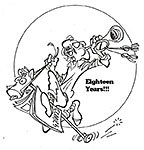
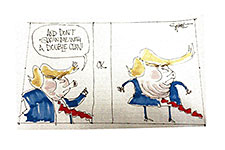

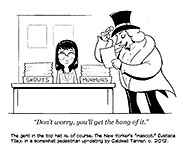
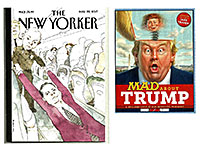
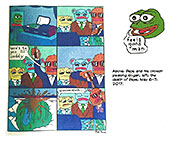

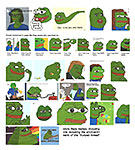
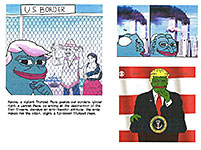

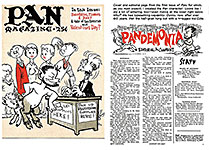
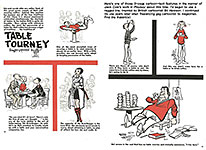
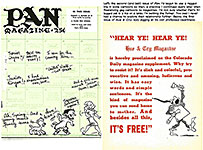
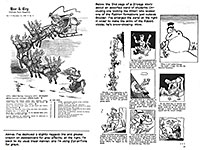


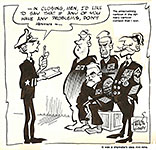
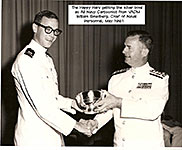
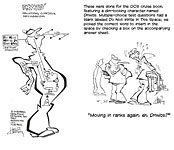
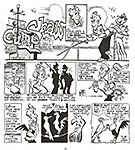
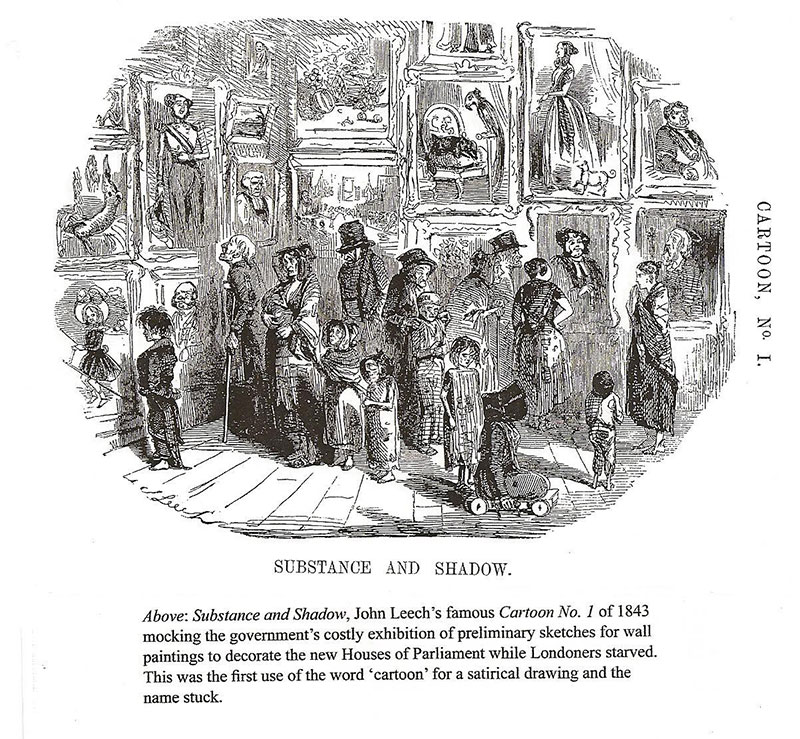

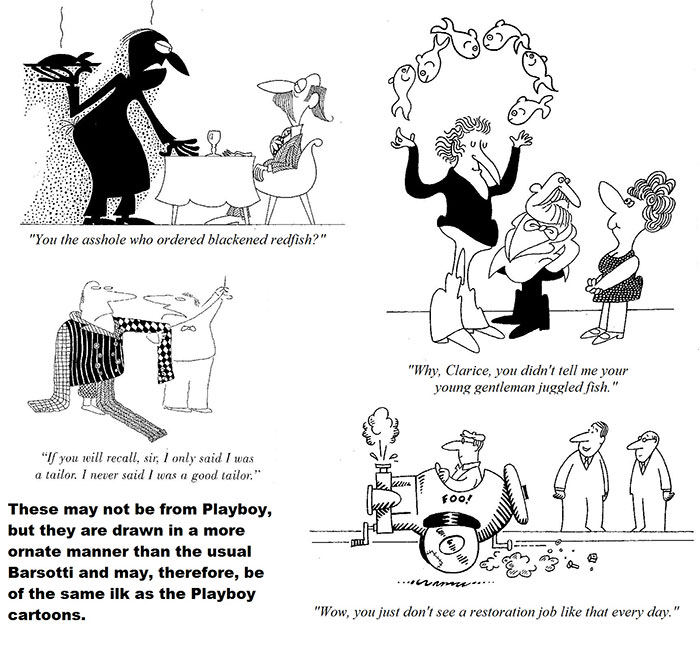
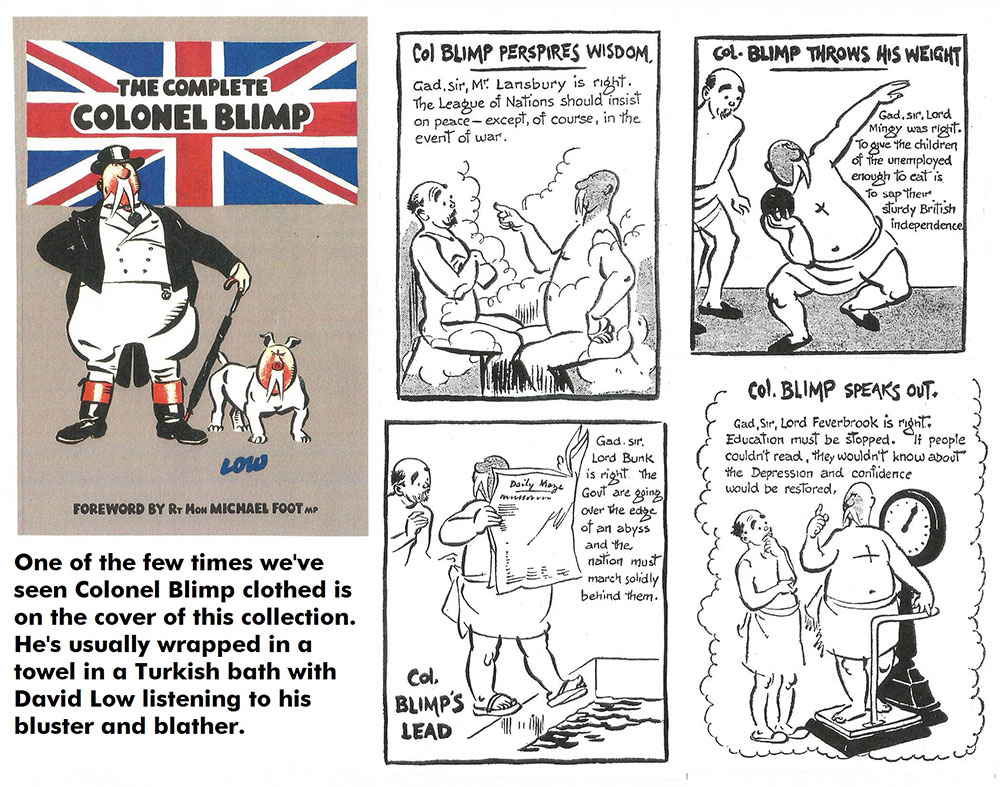
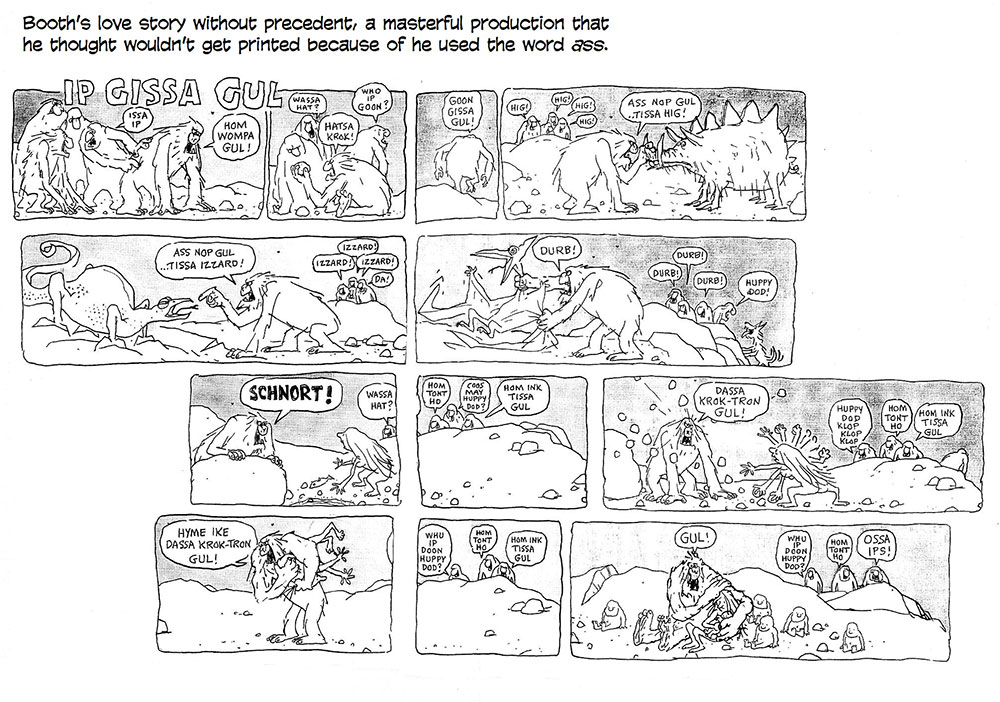
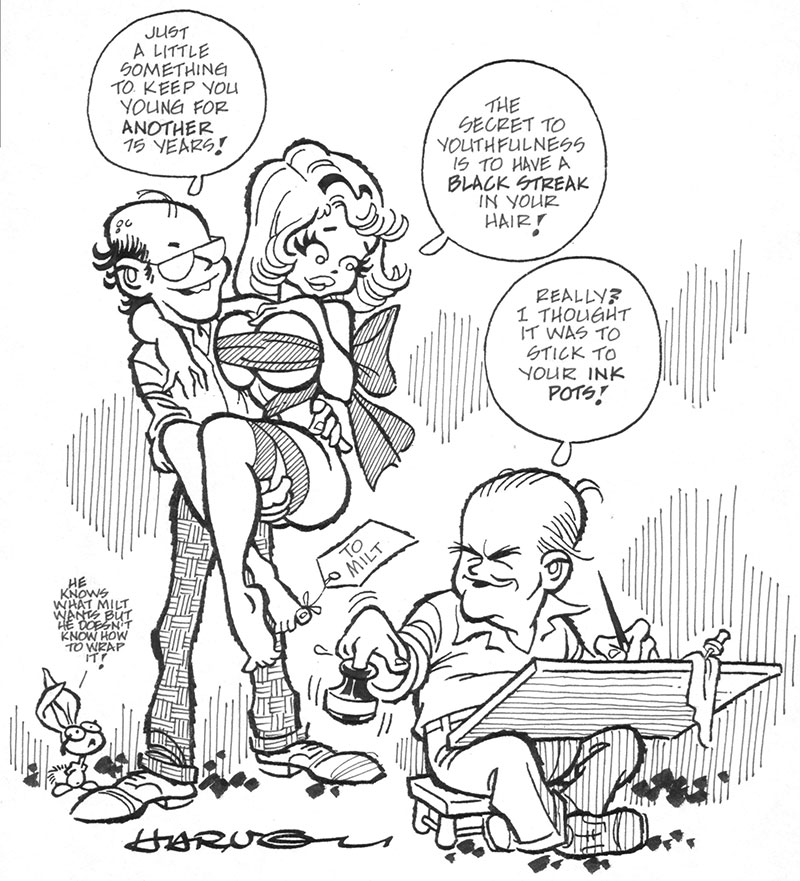

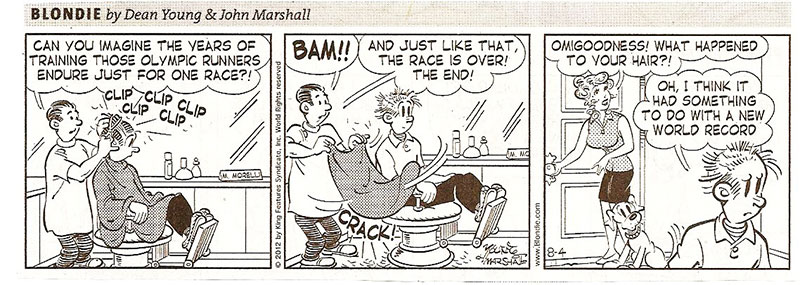


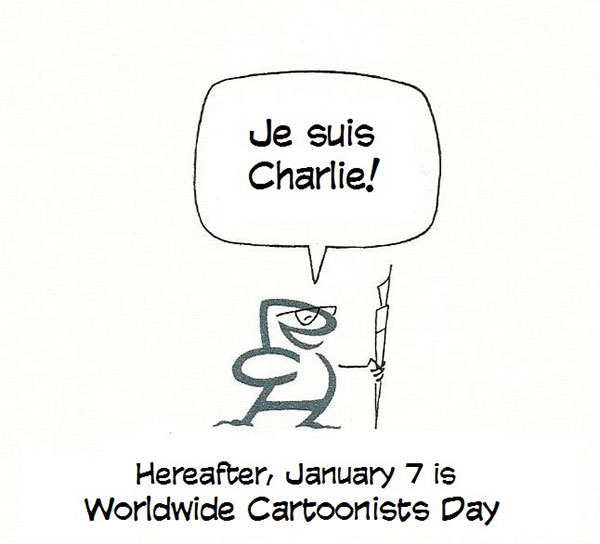

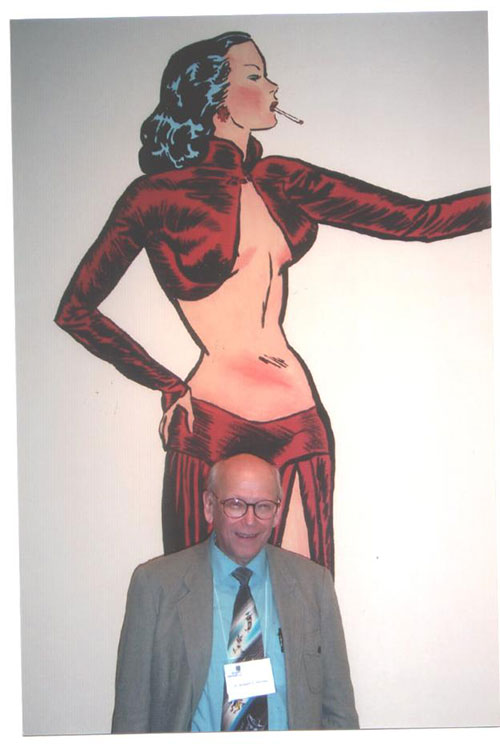
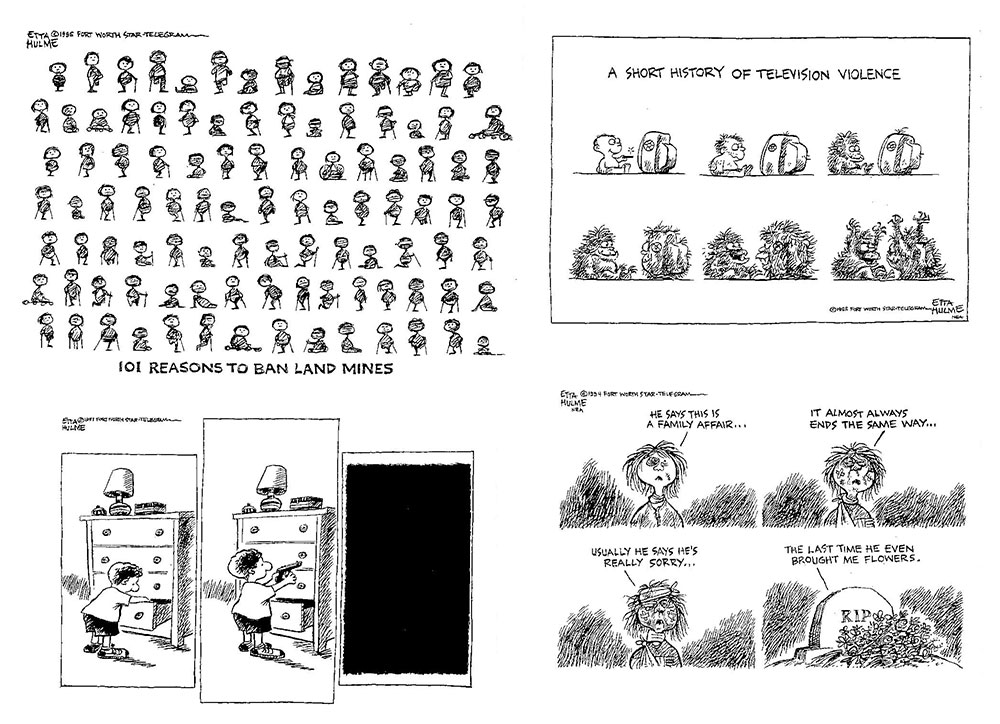
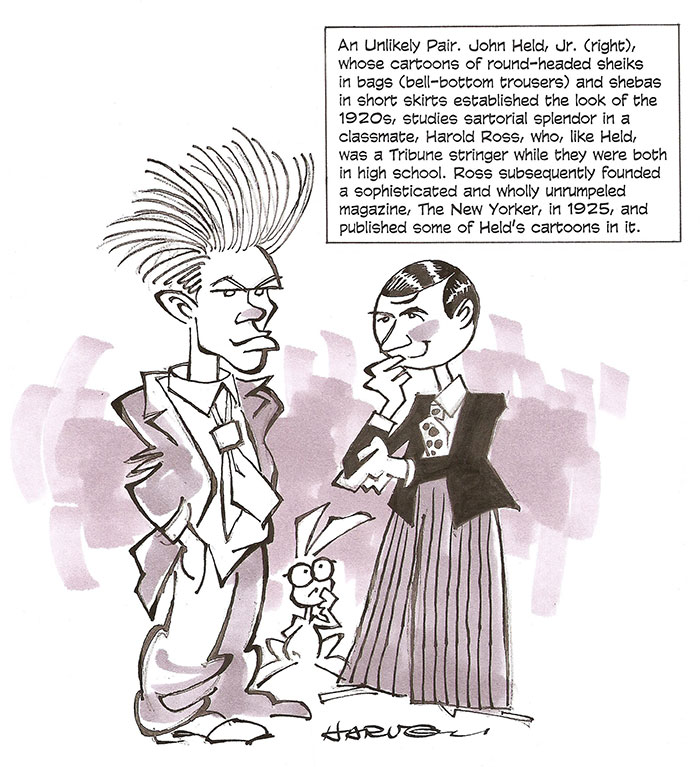
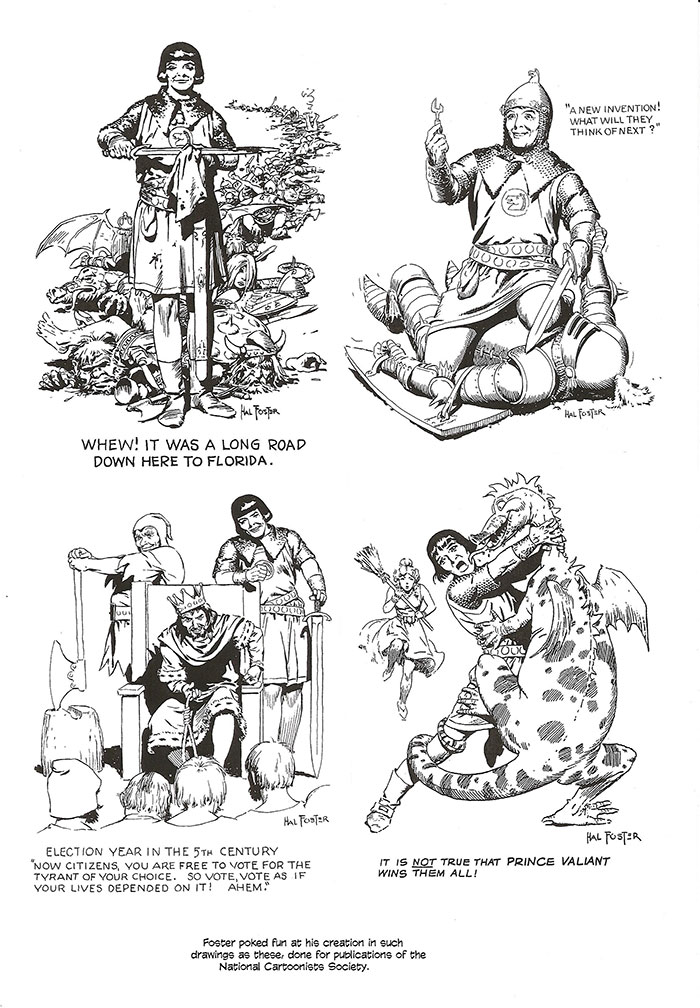
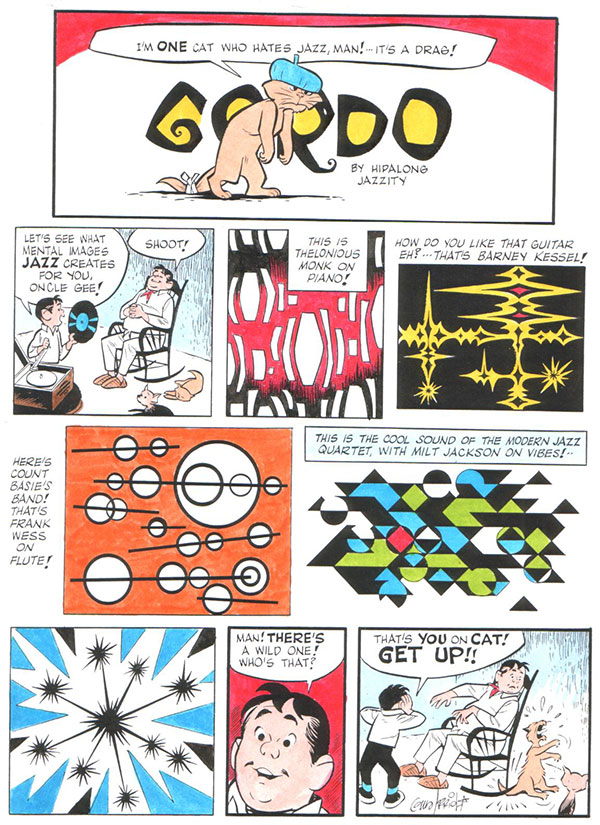



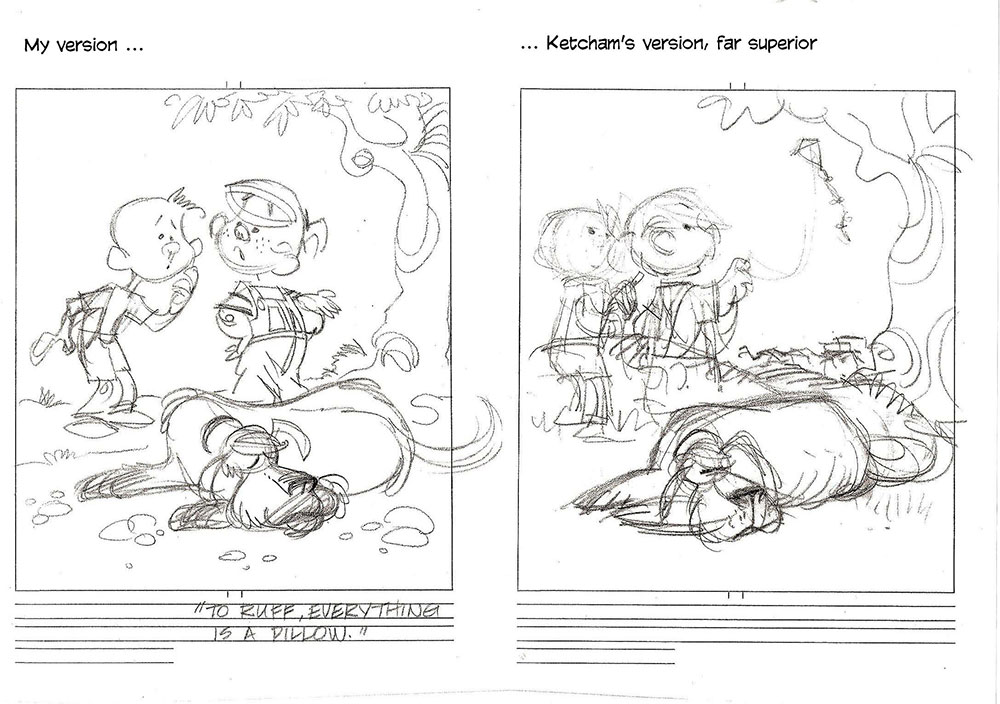


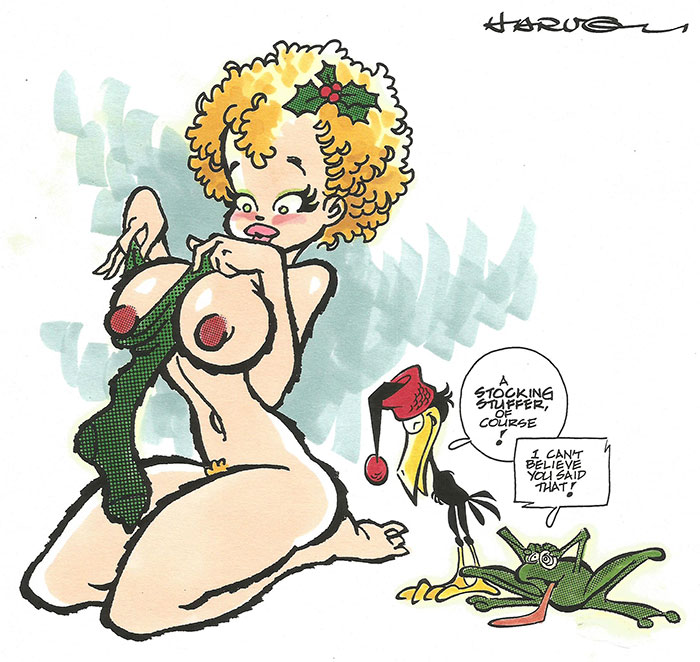

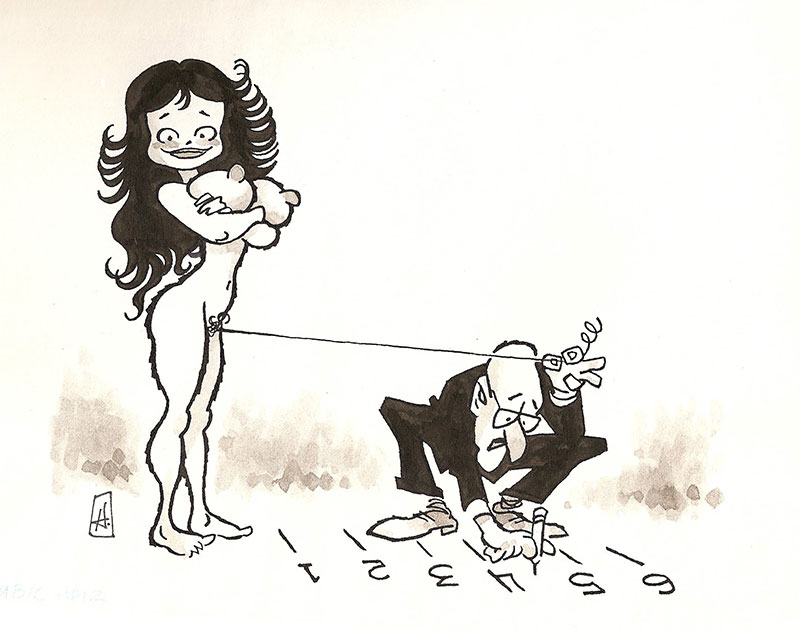
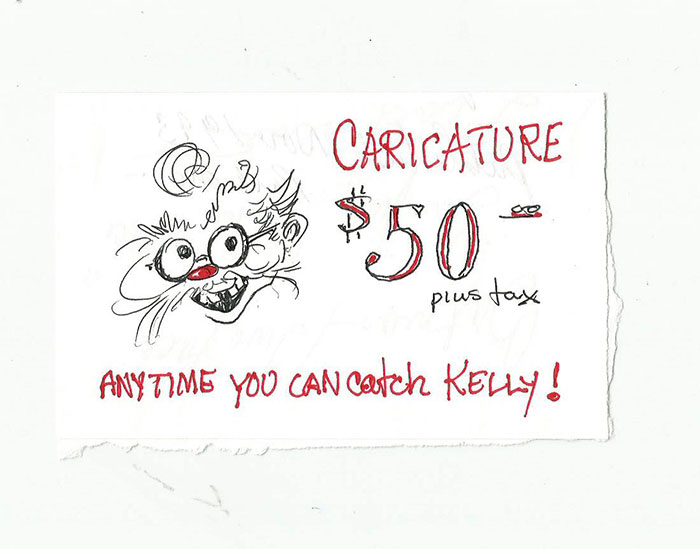
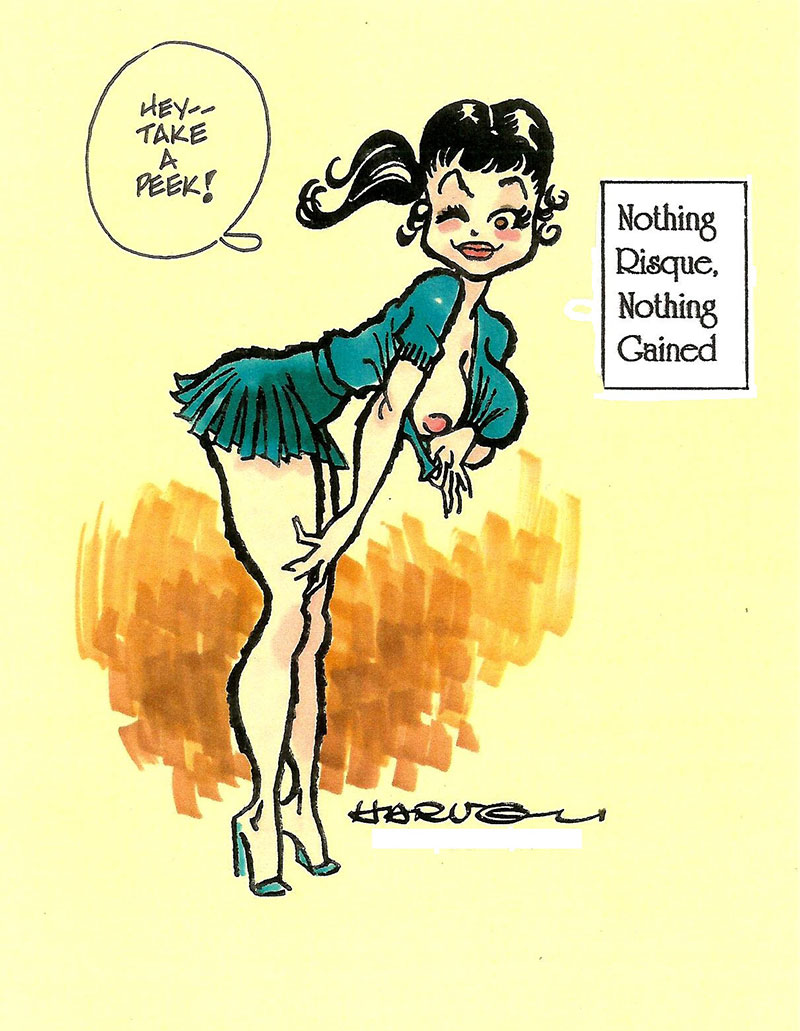







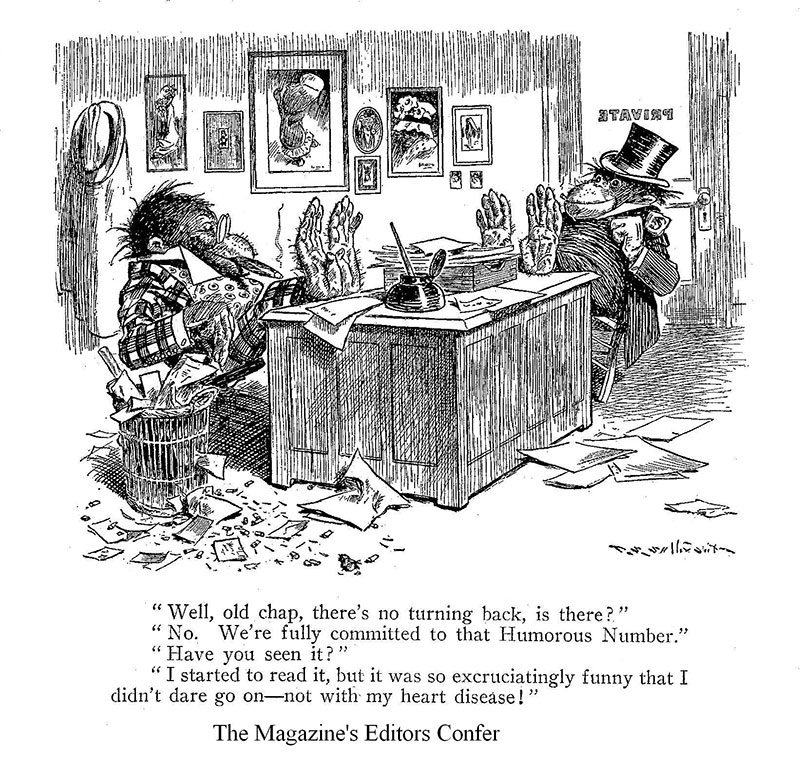


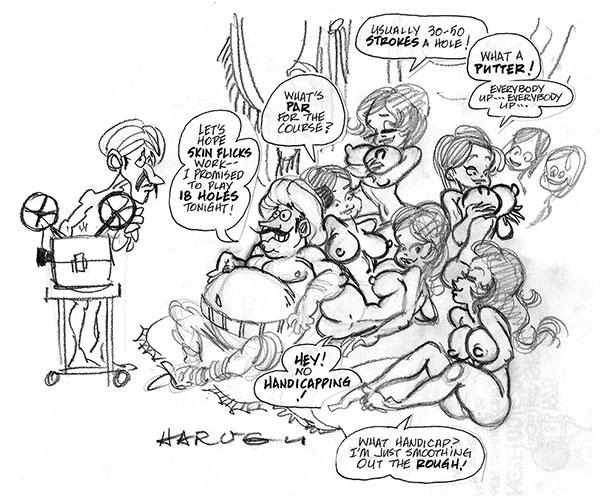

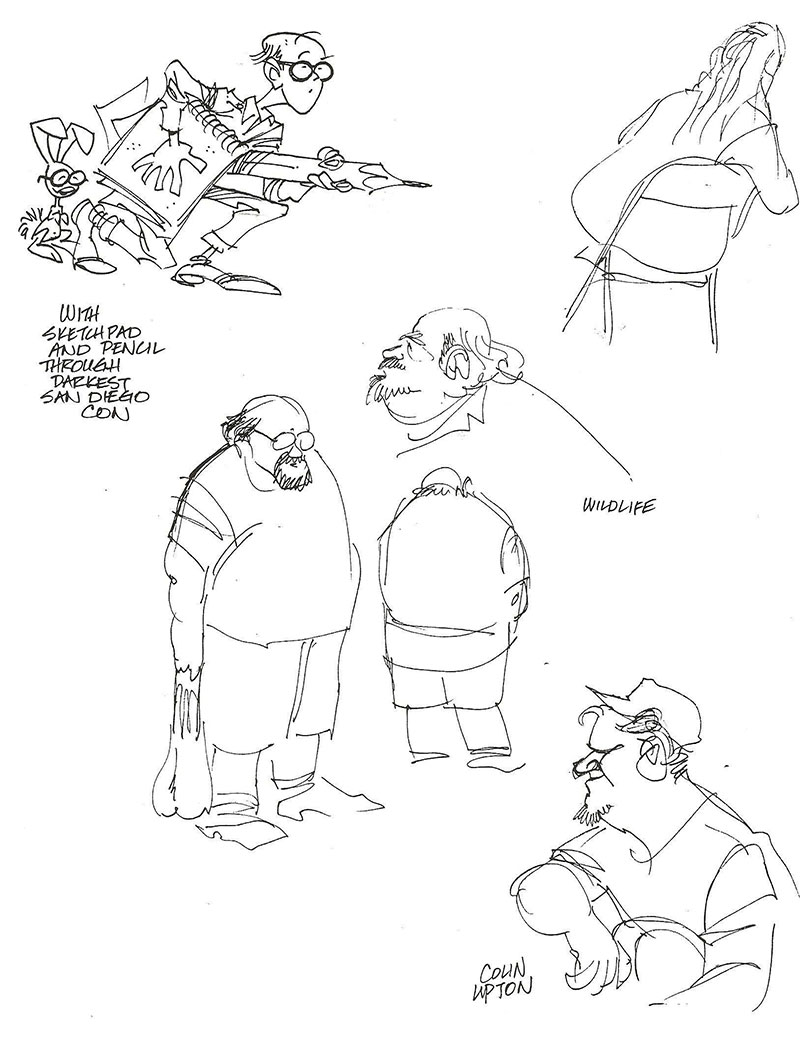
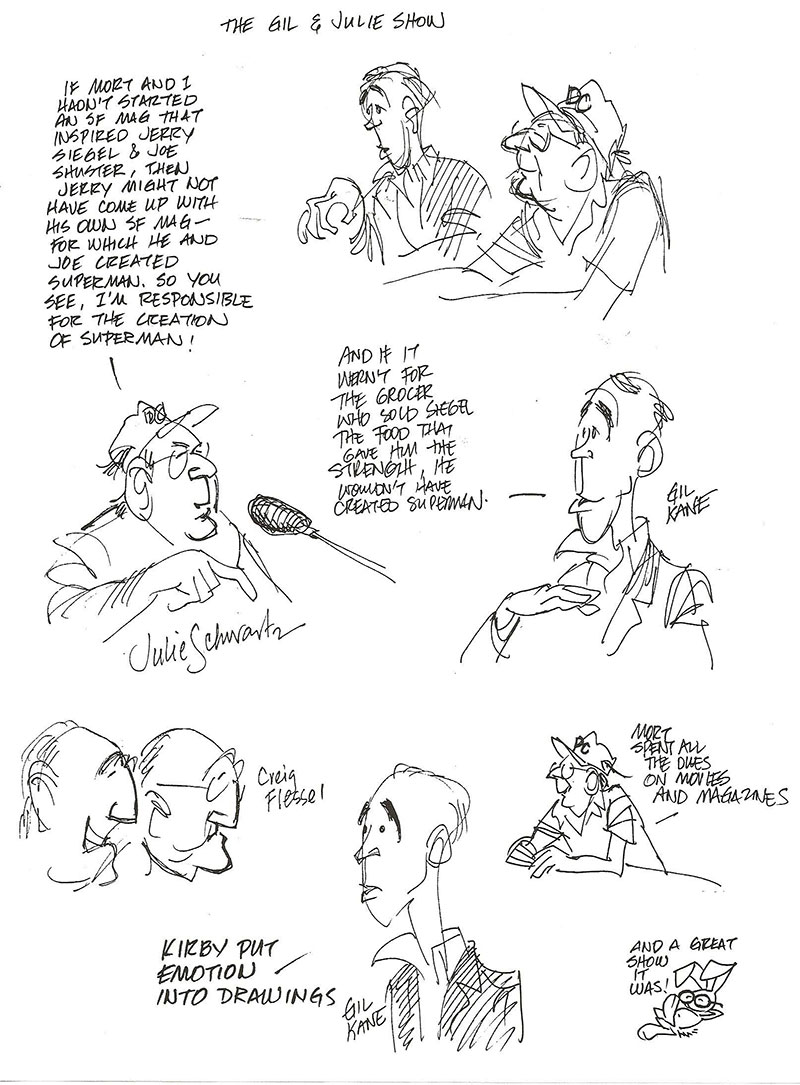
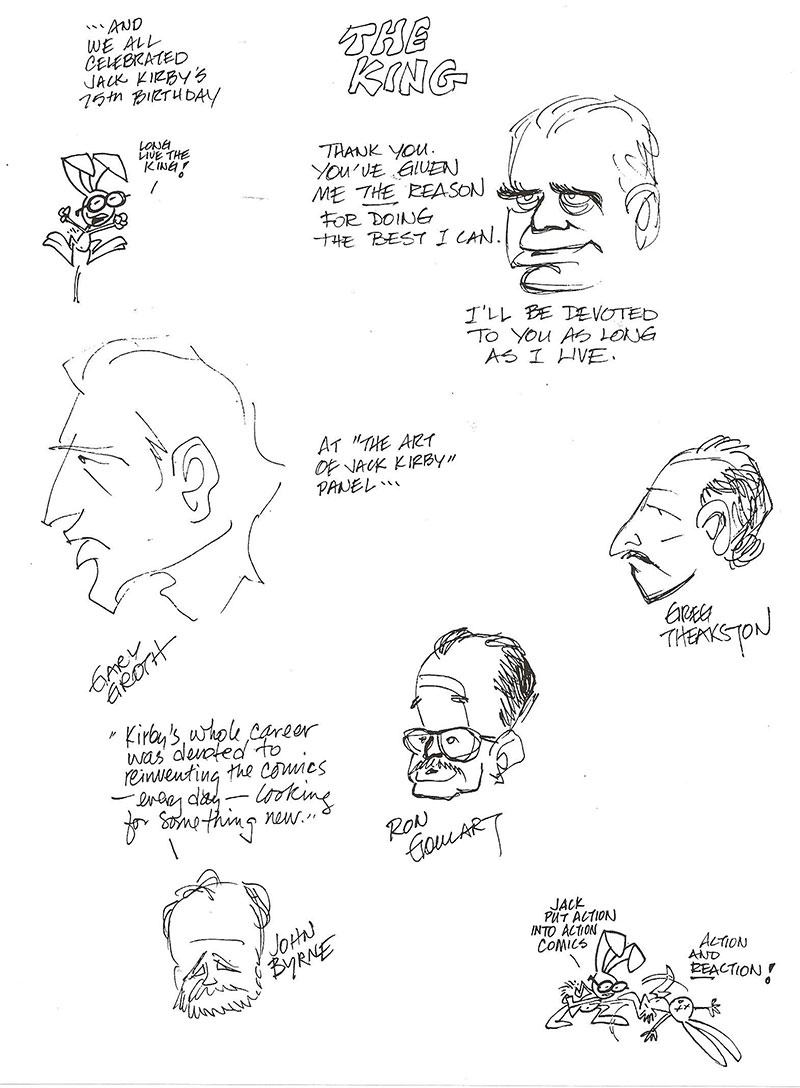
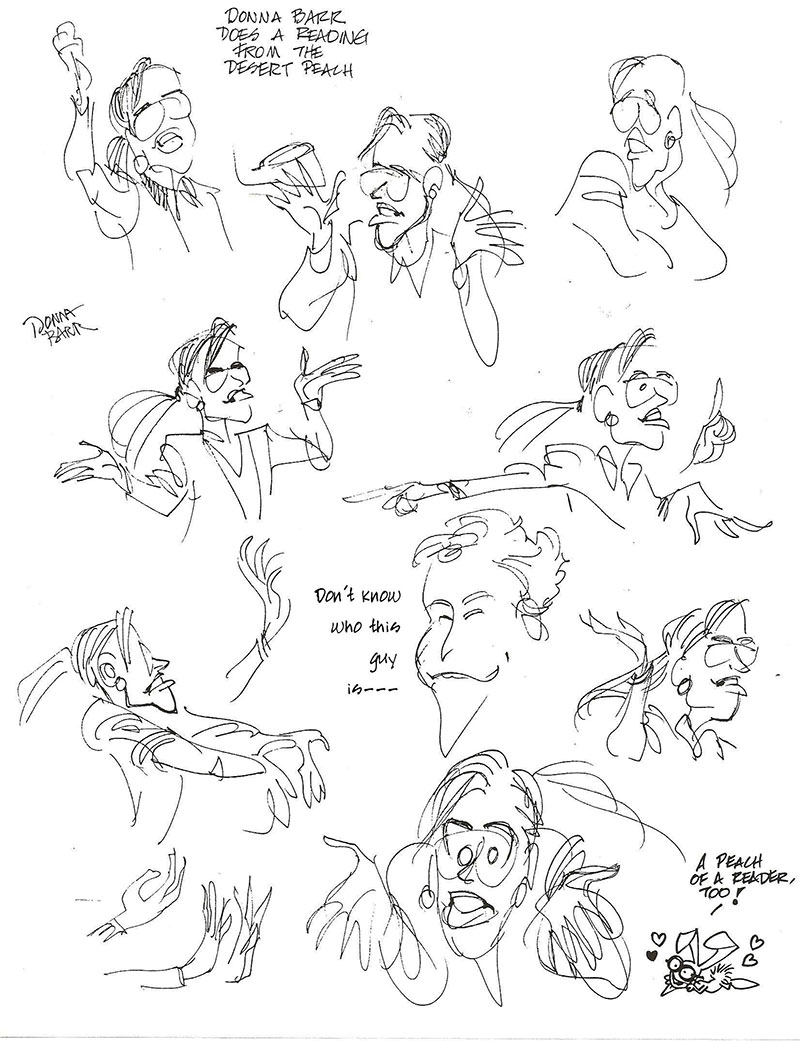
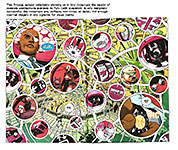
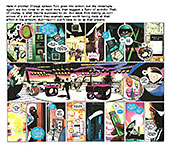
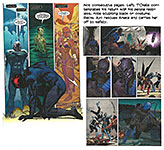
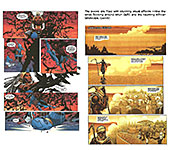
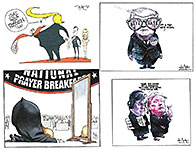
1.jpg)
2.jpg)
3.jpg)
4.jpg)
1.jpg)
2.jpg)
3.jpg)
4.jpg)

